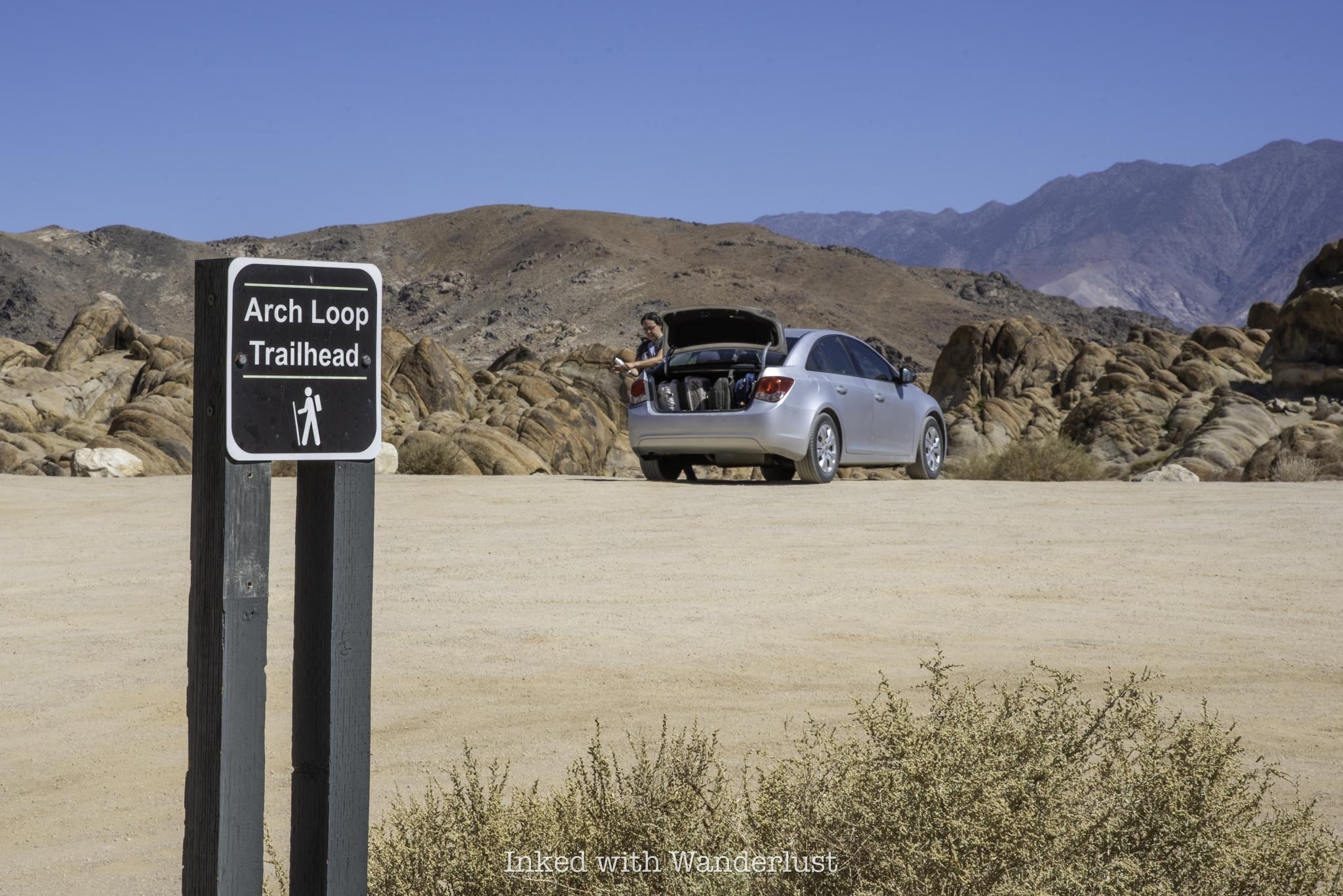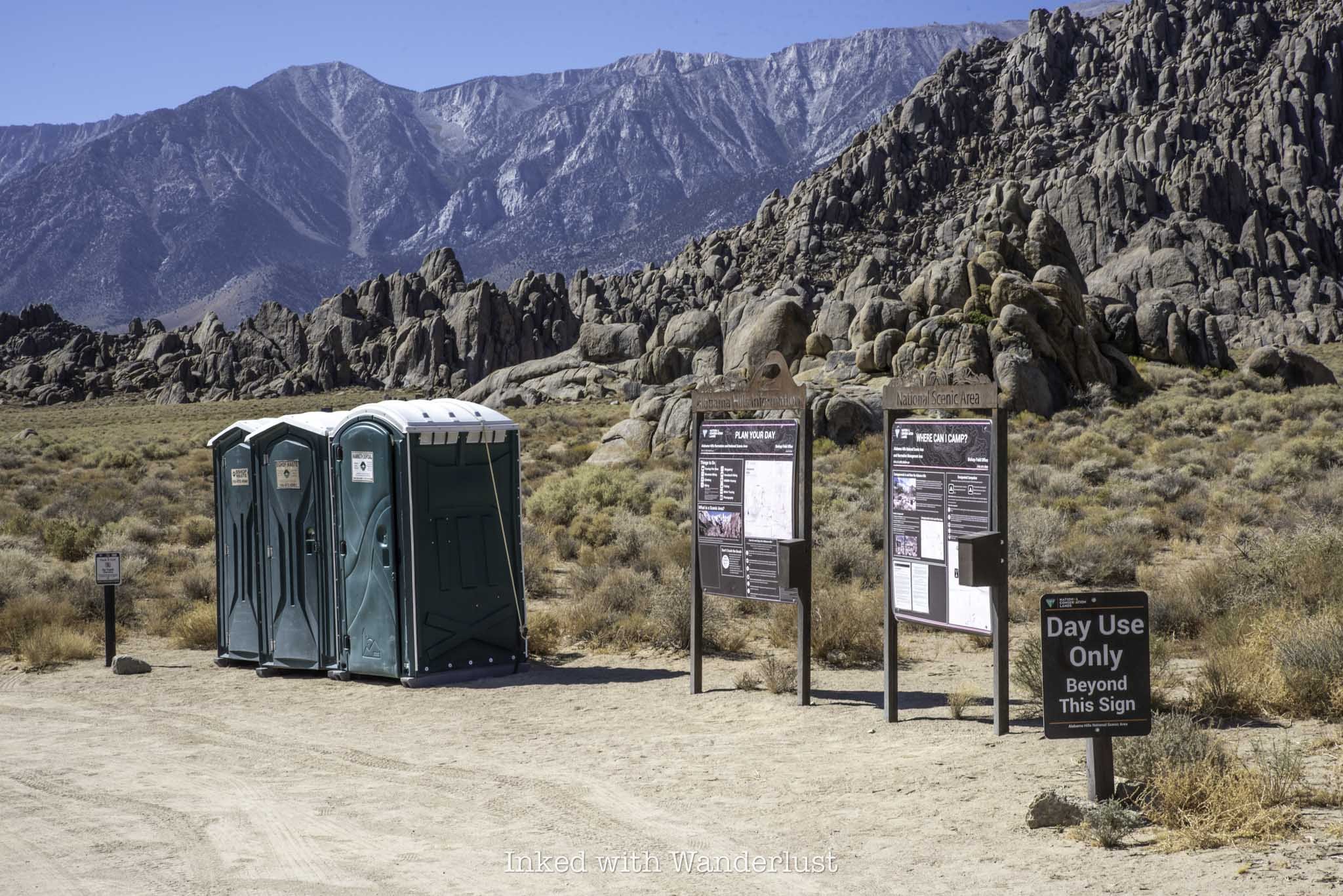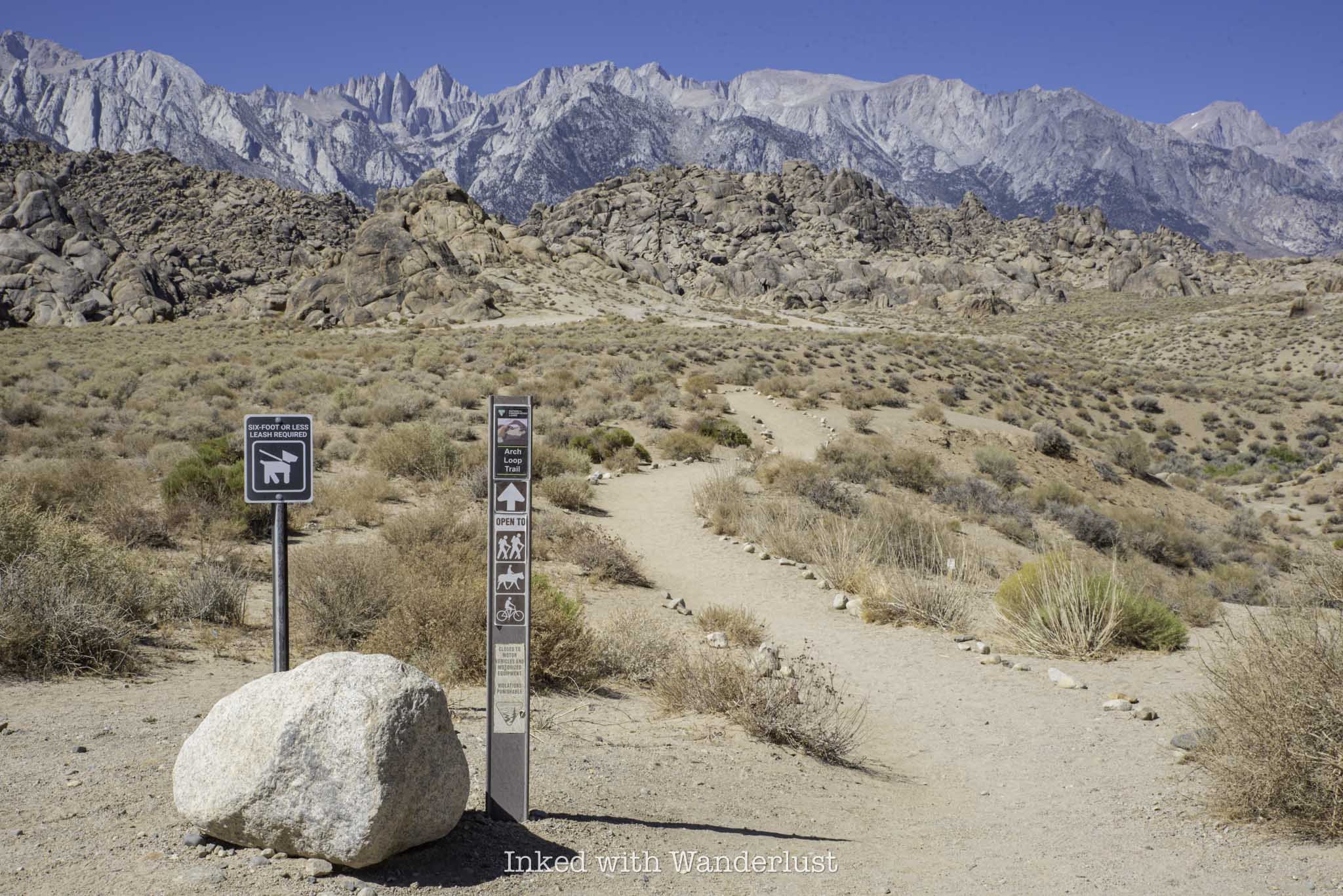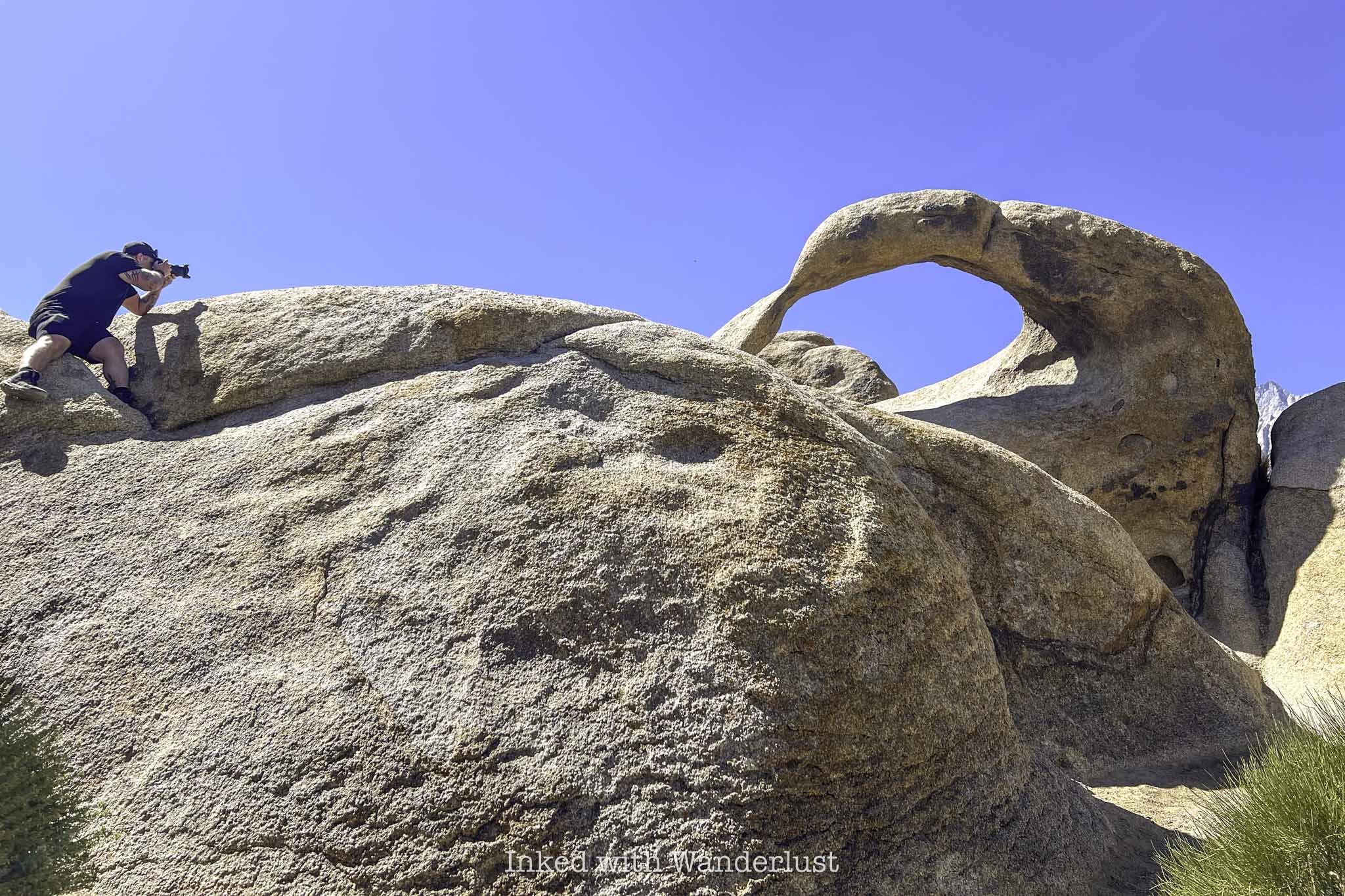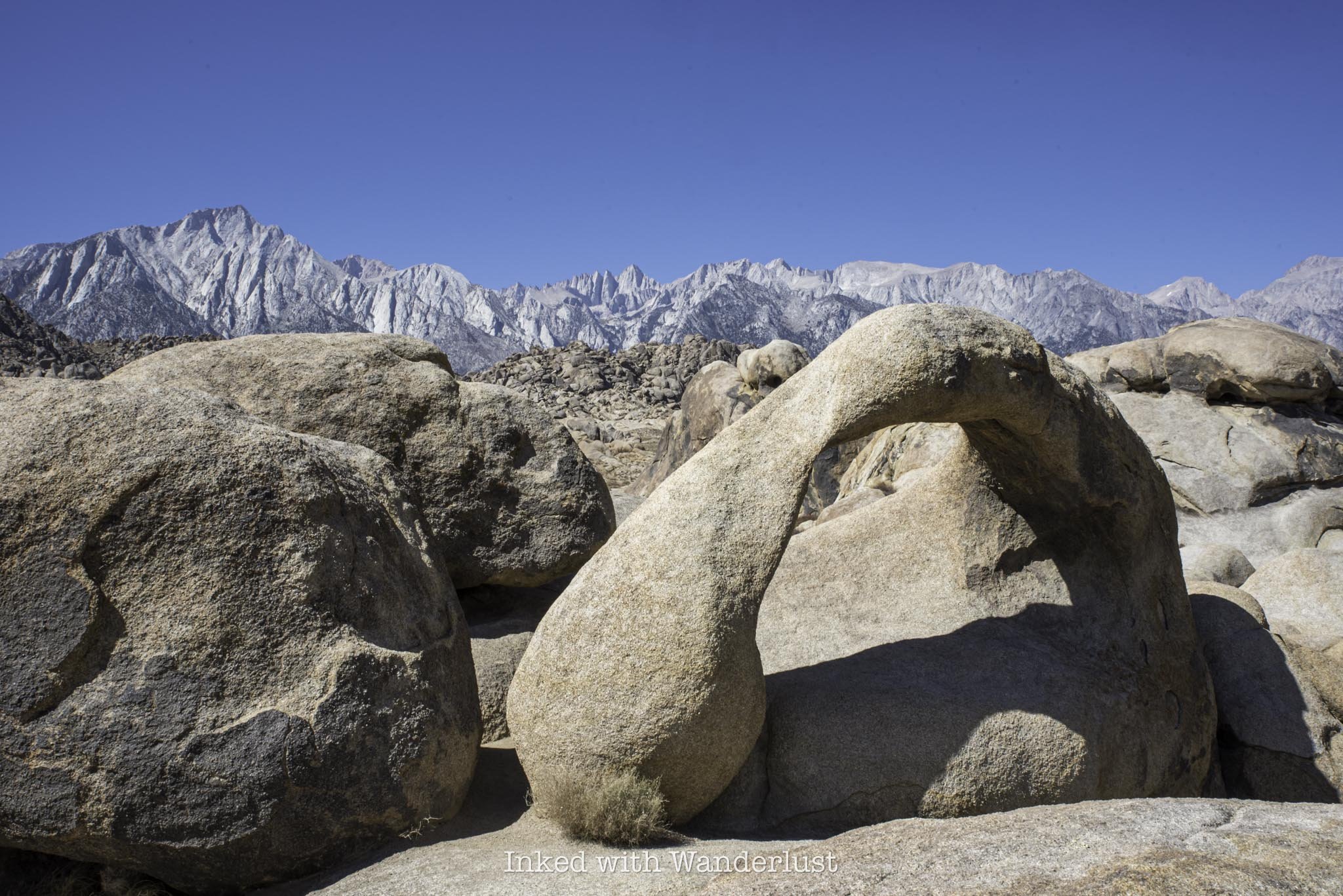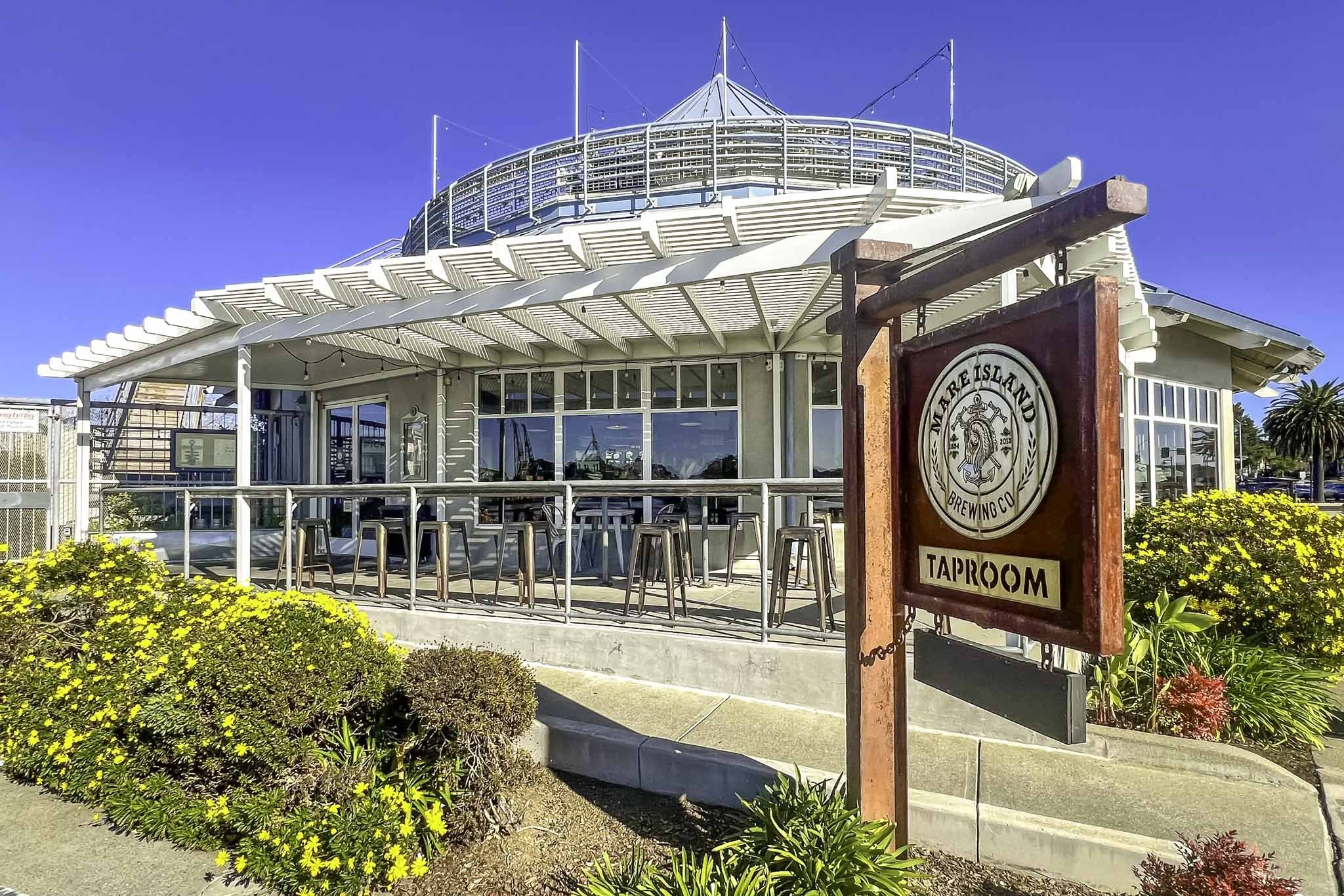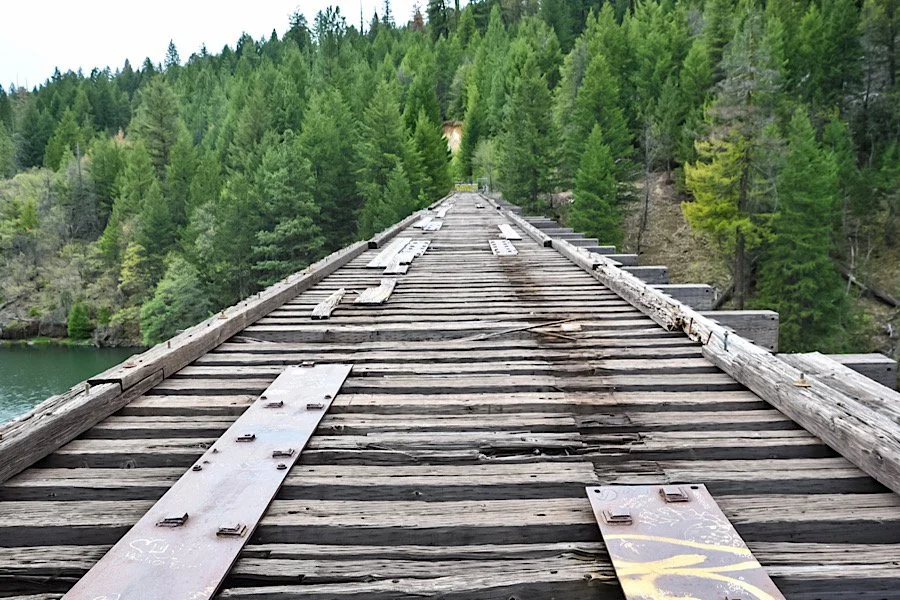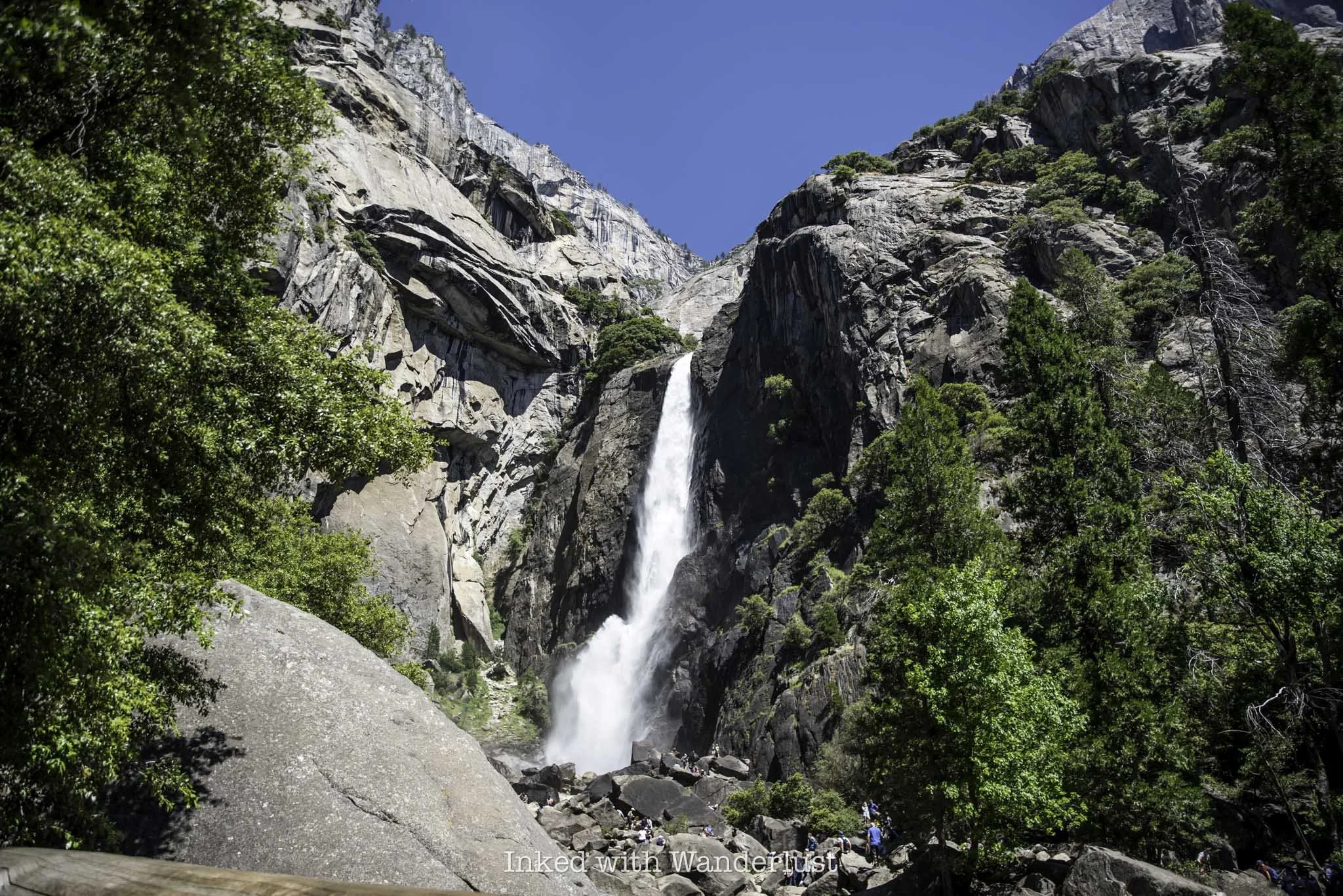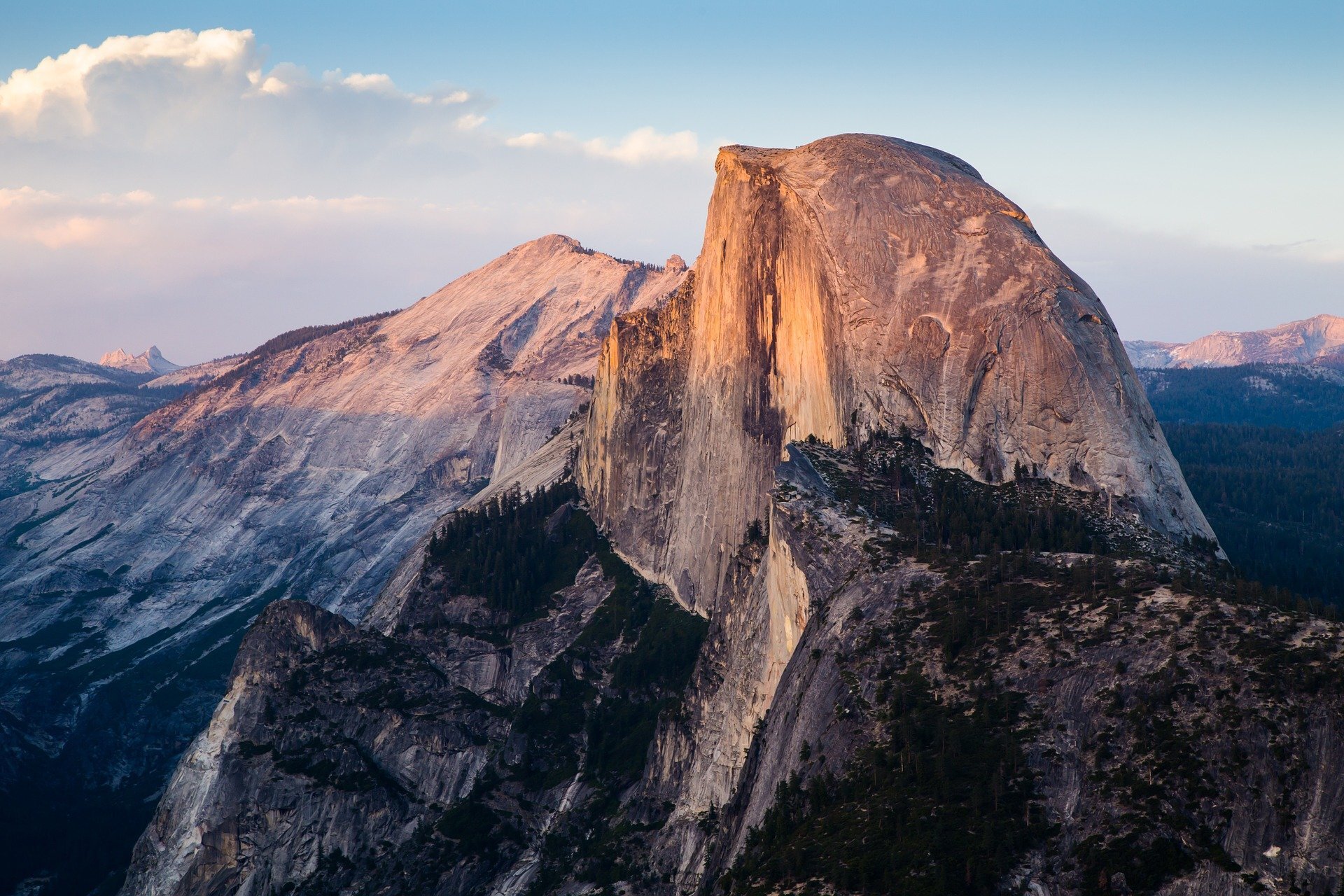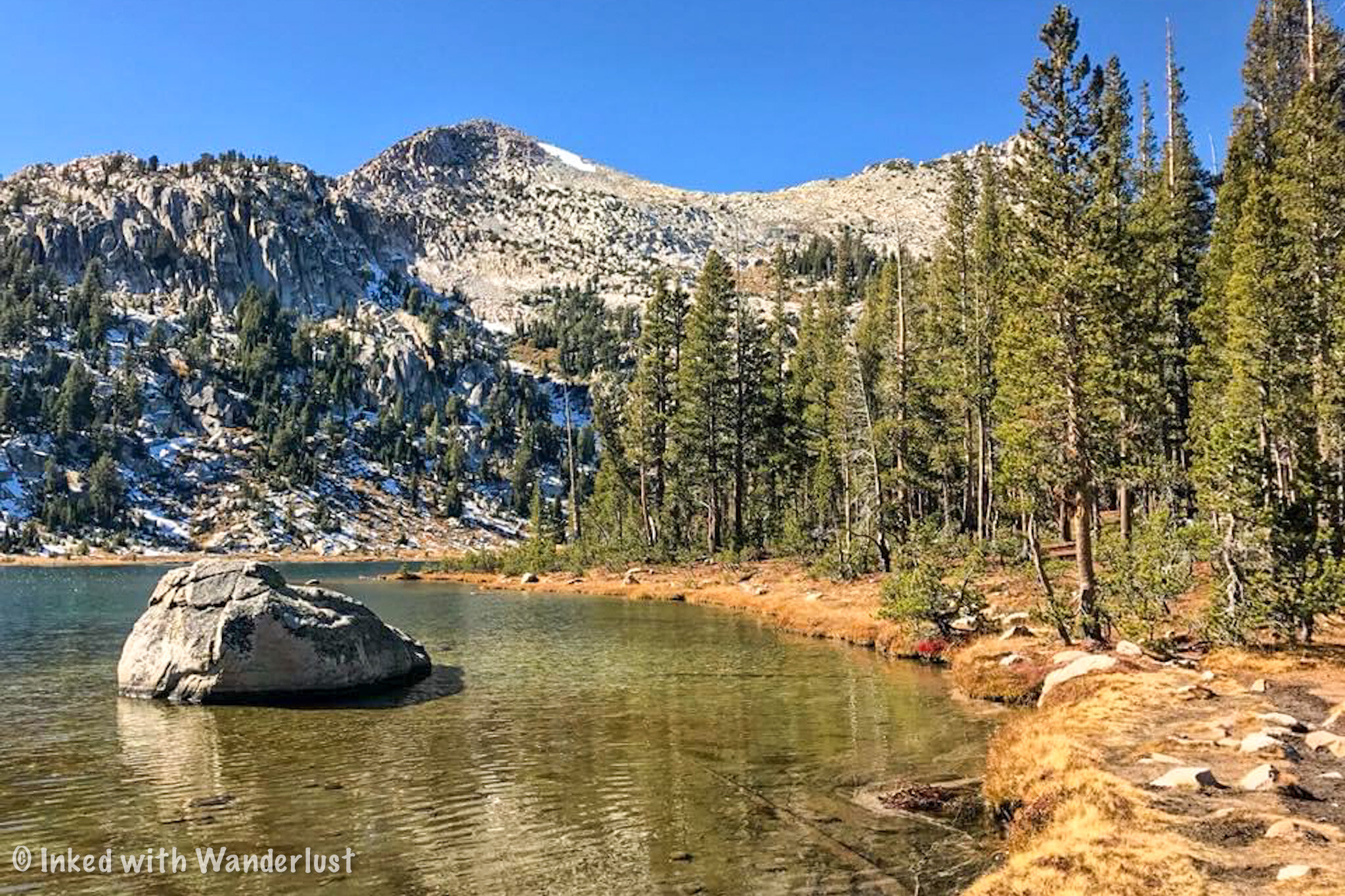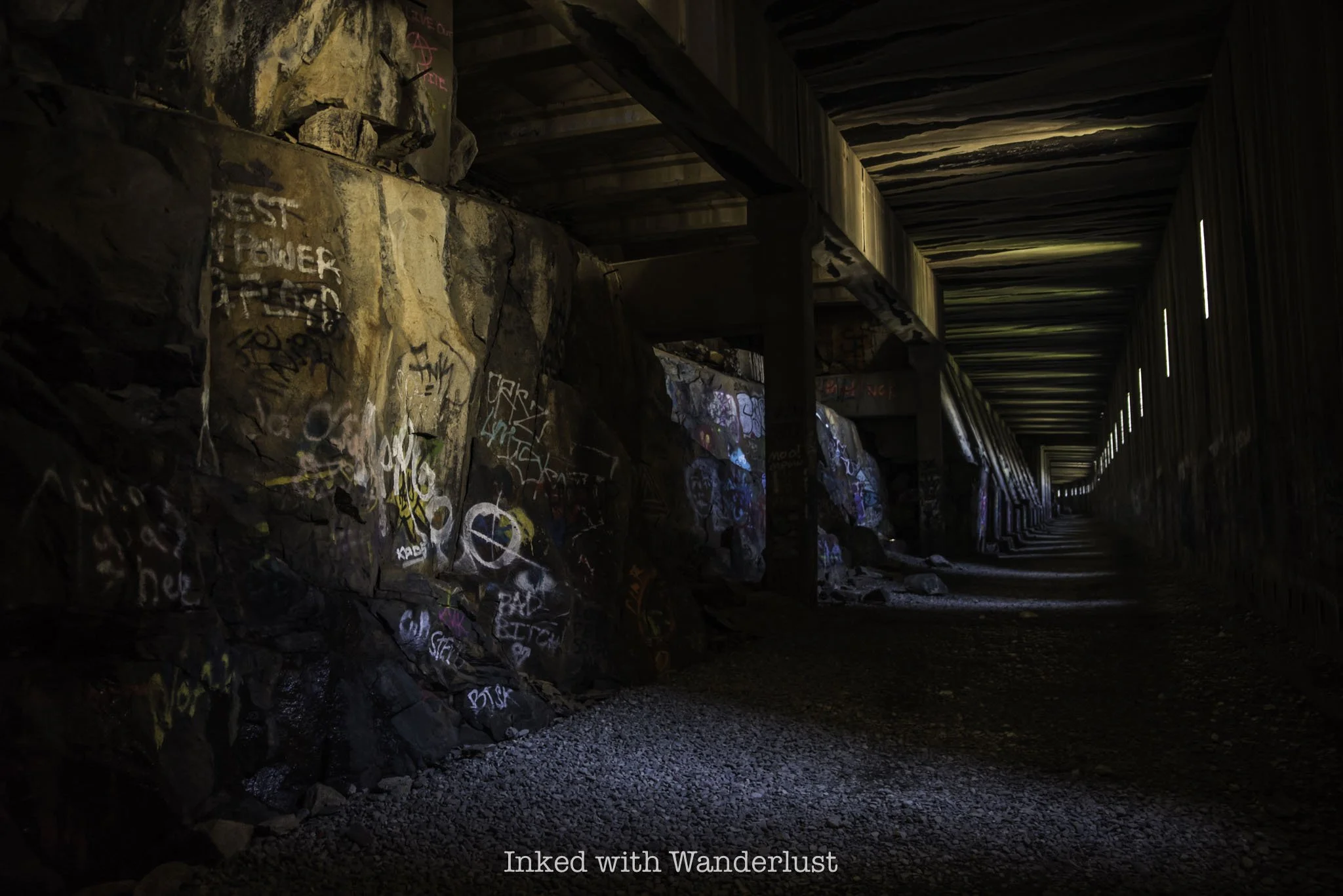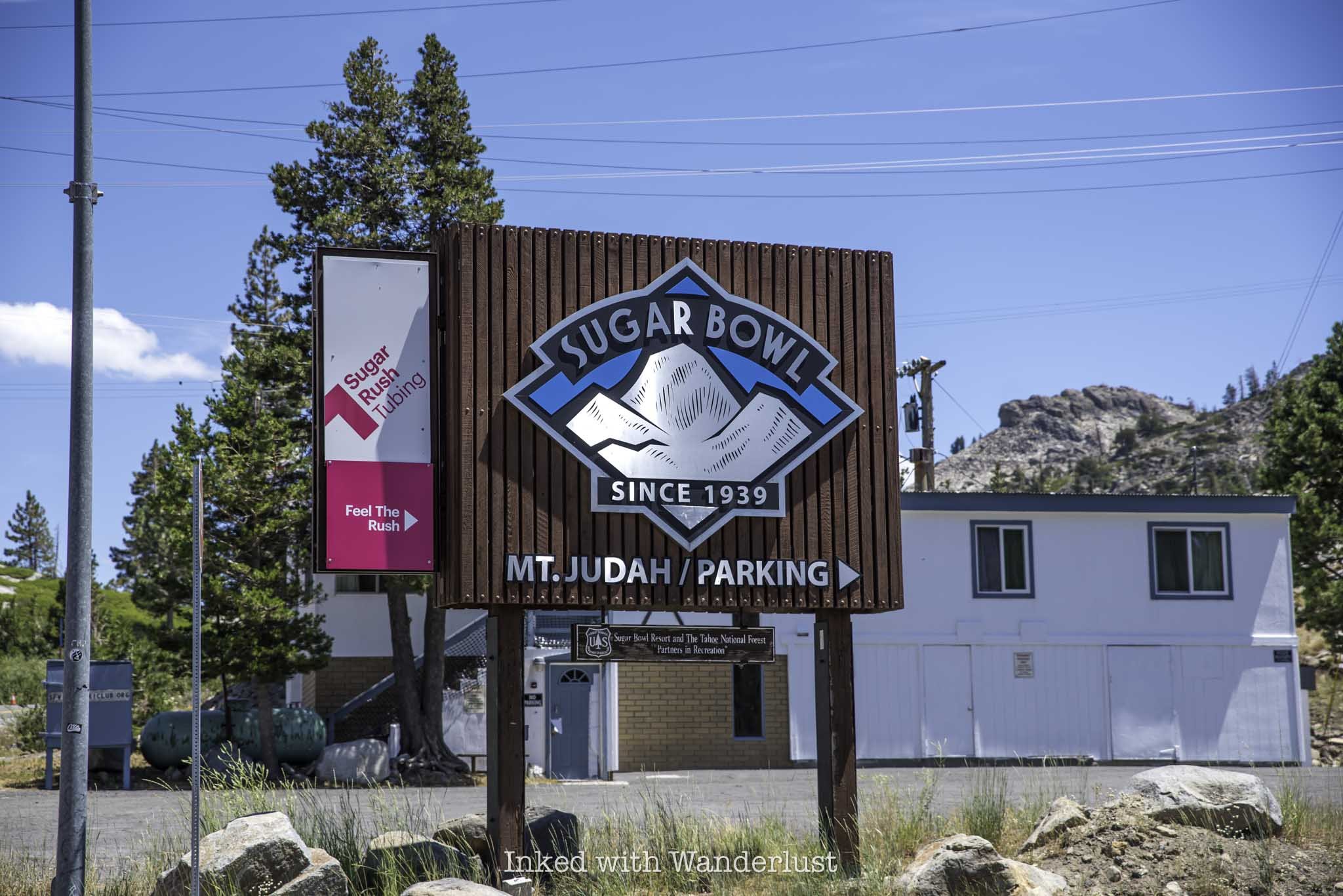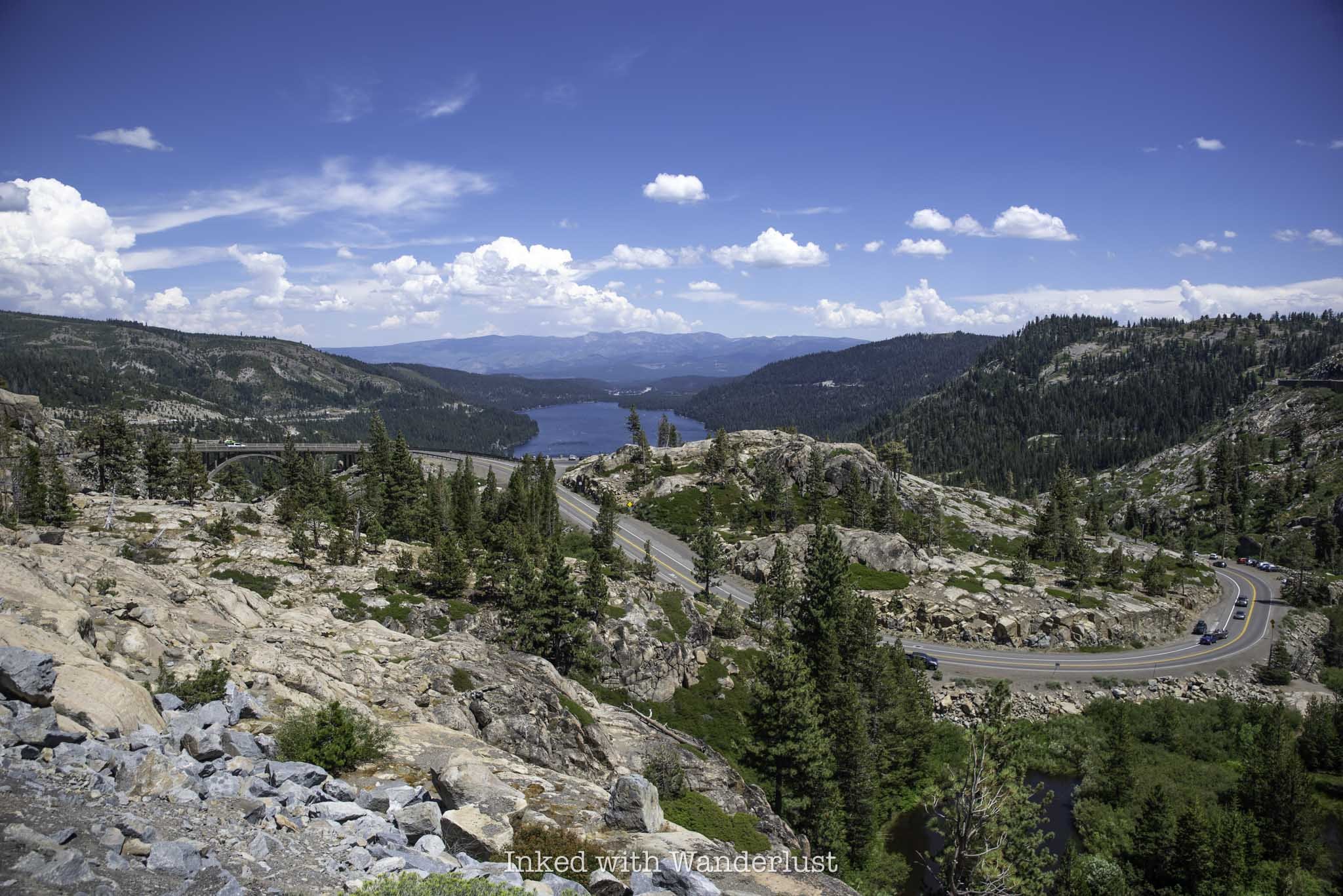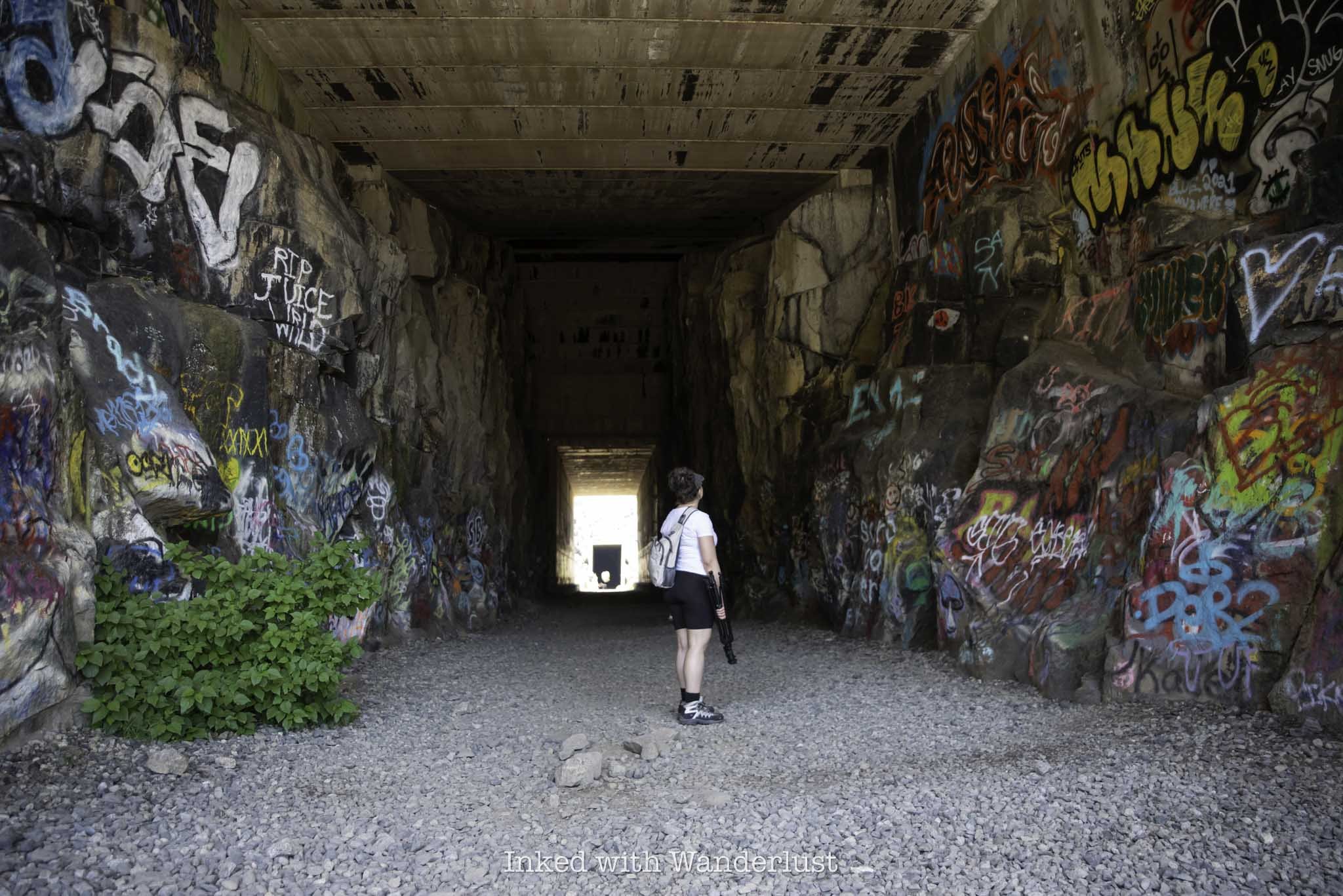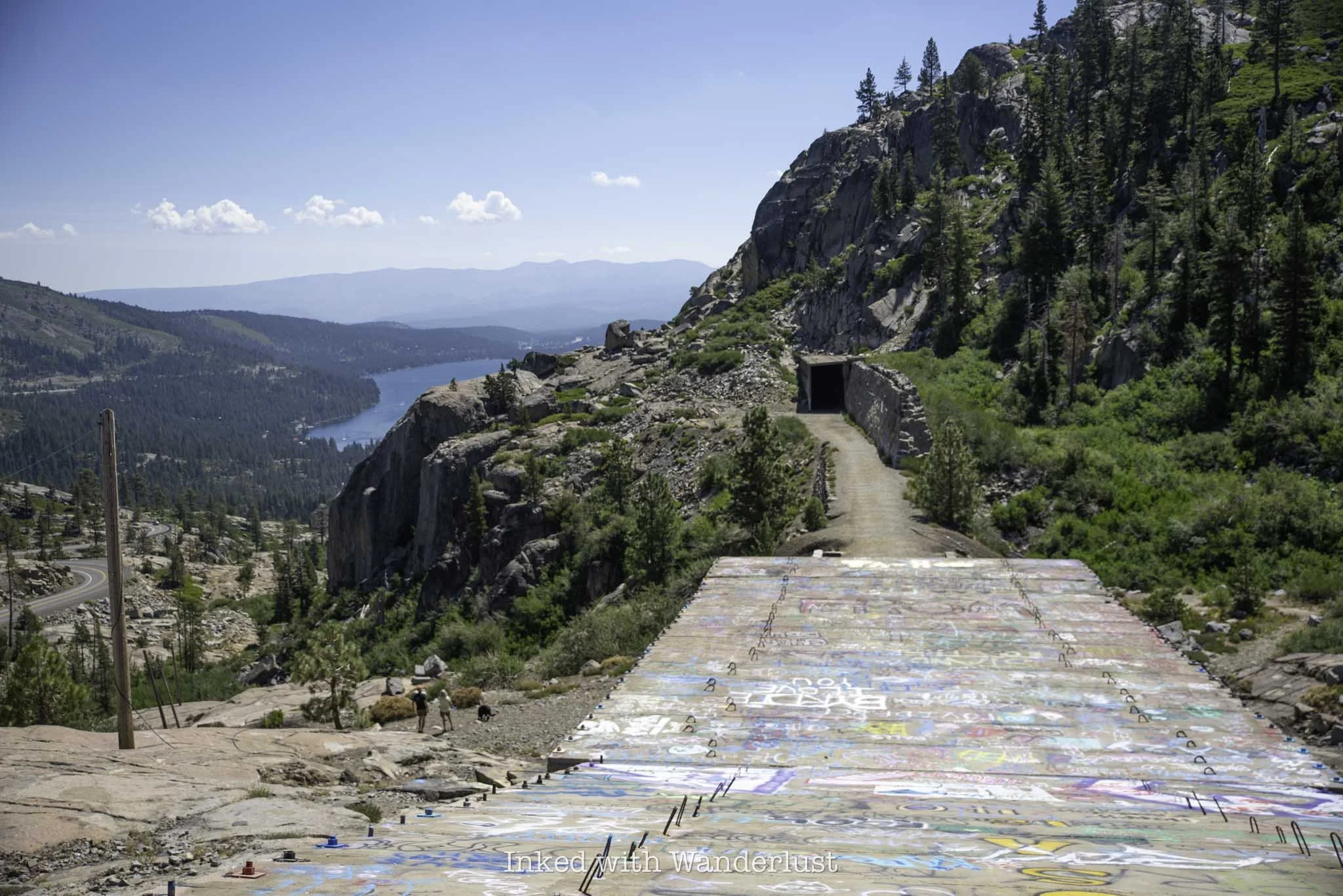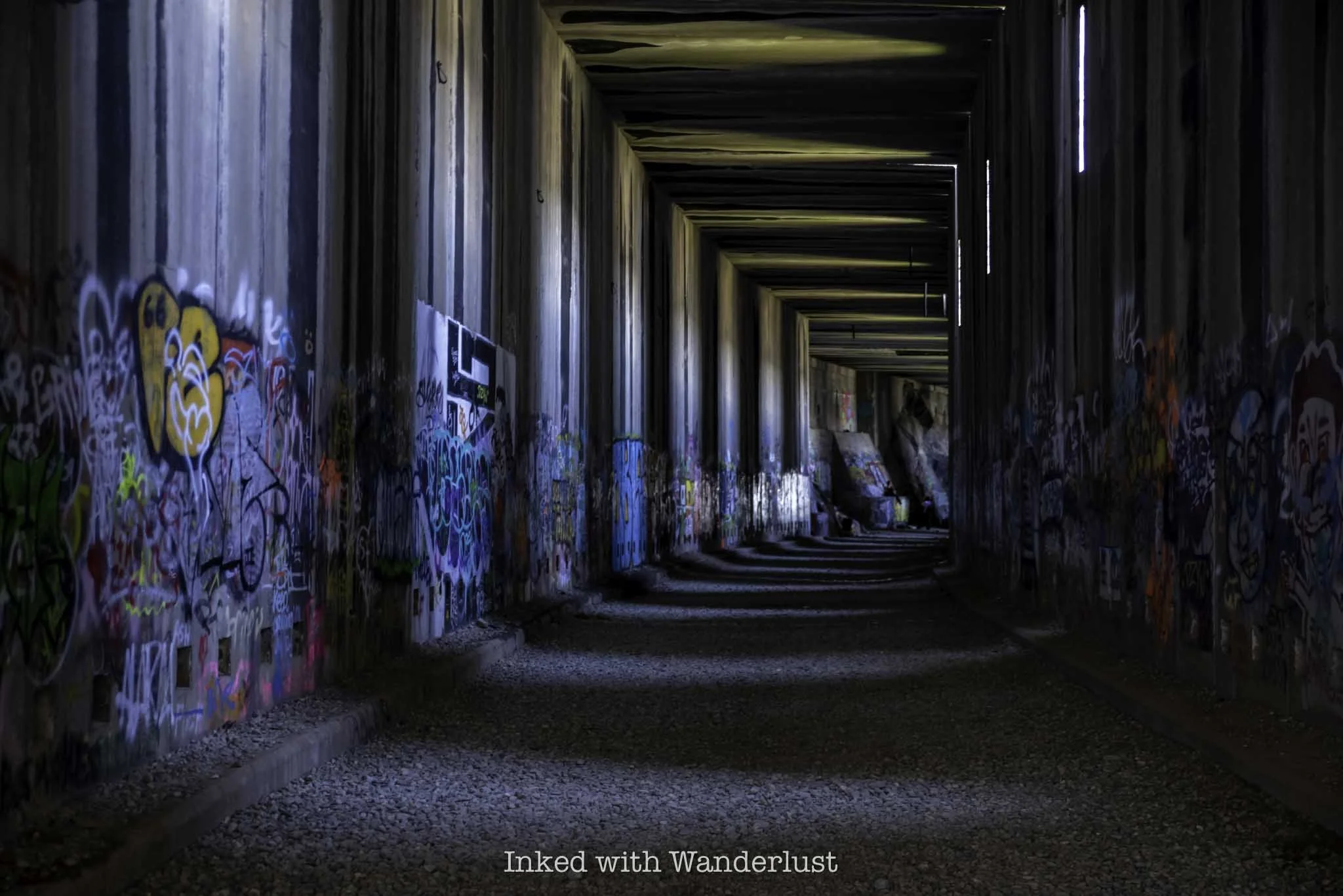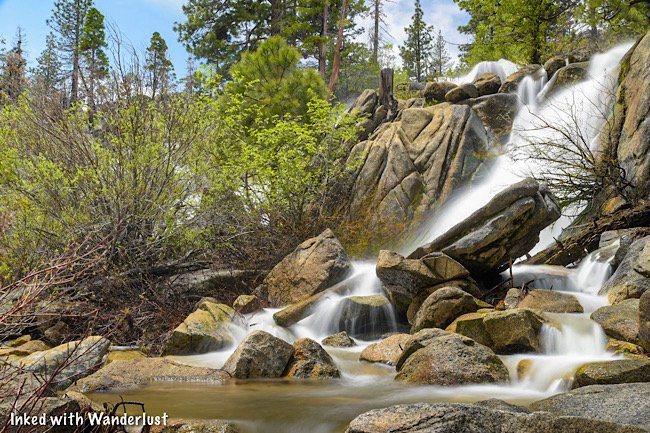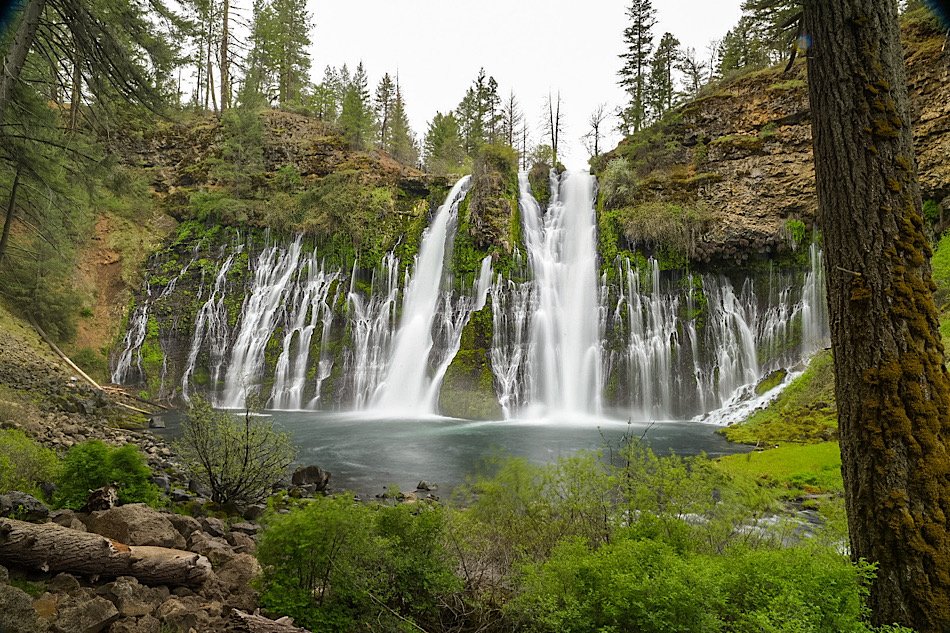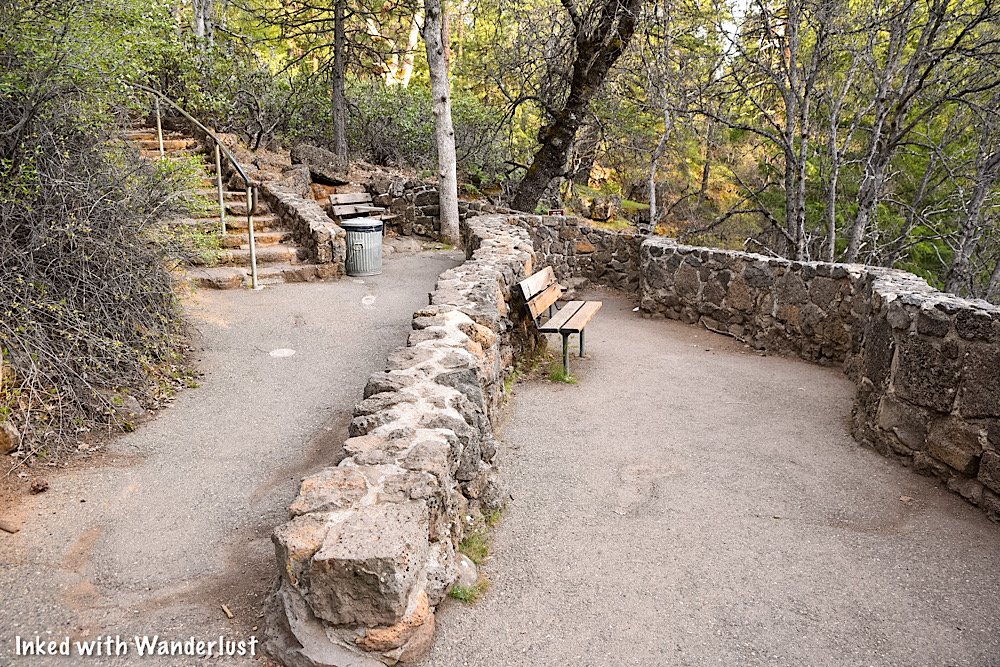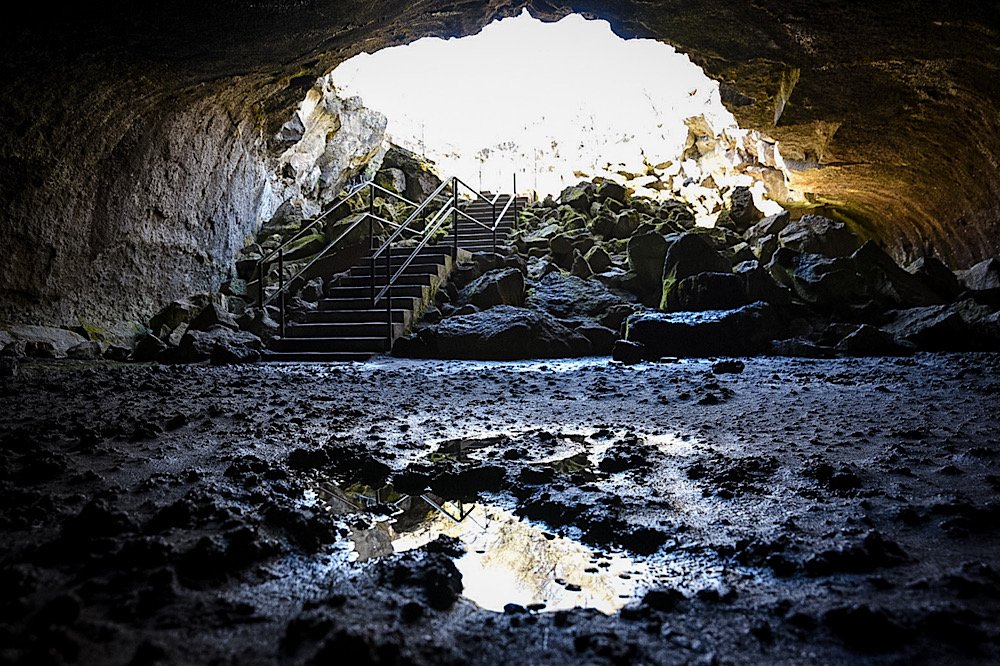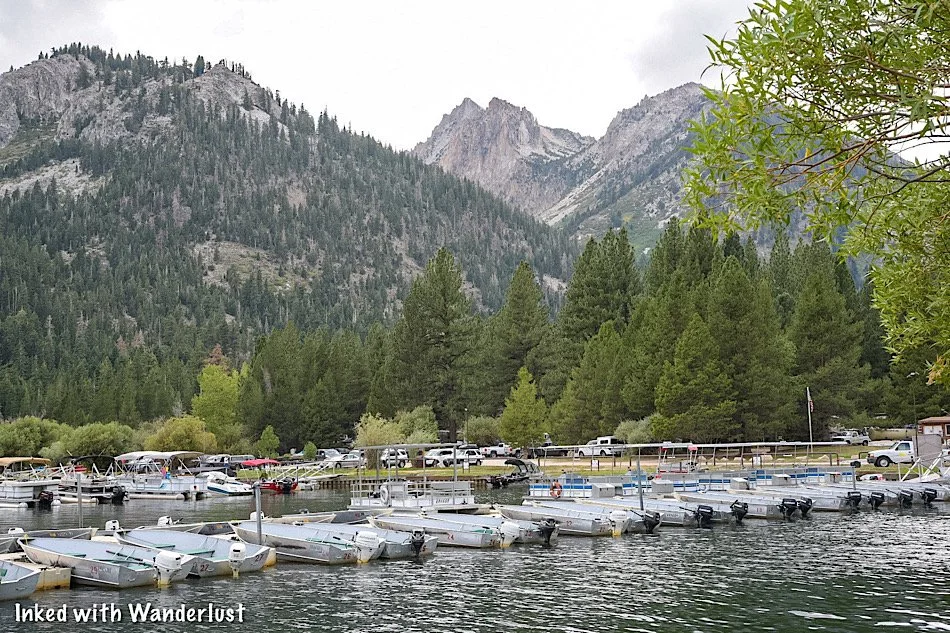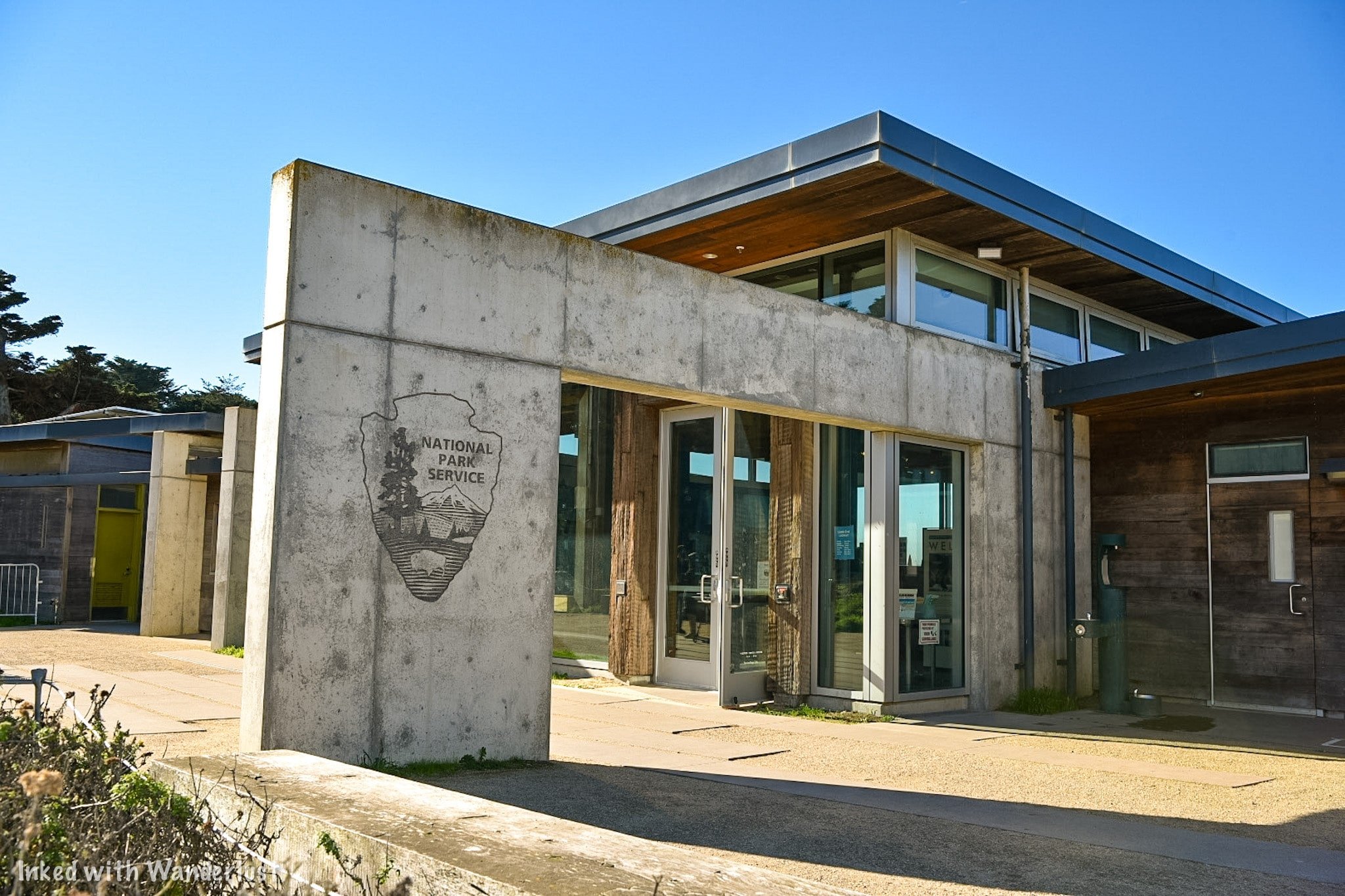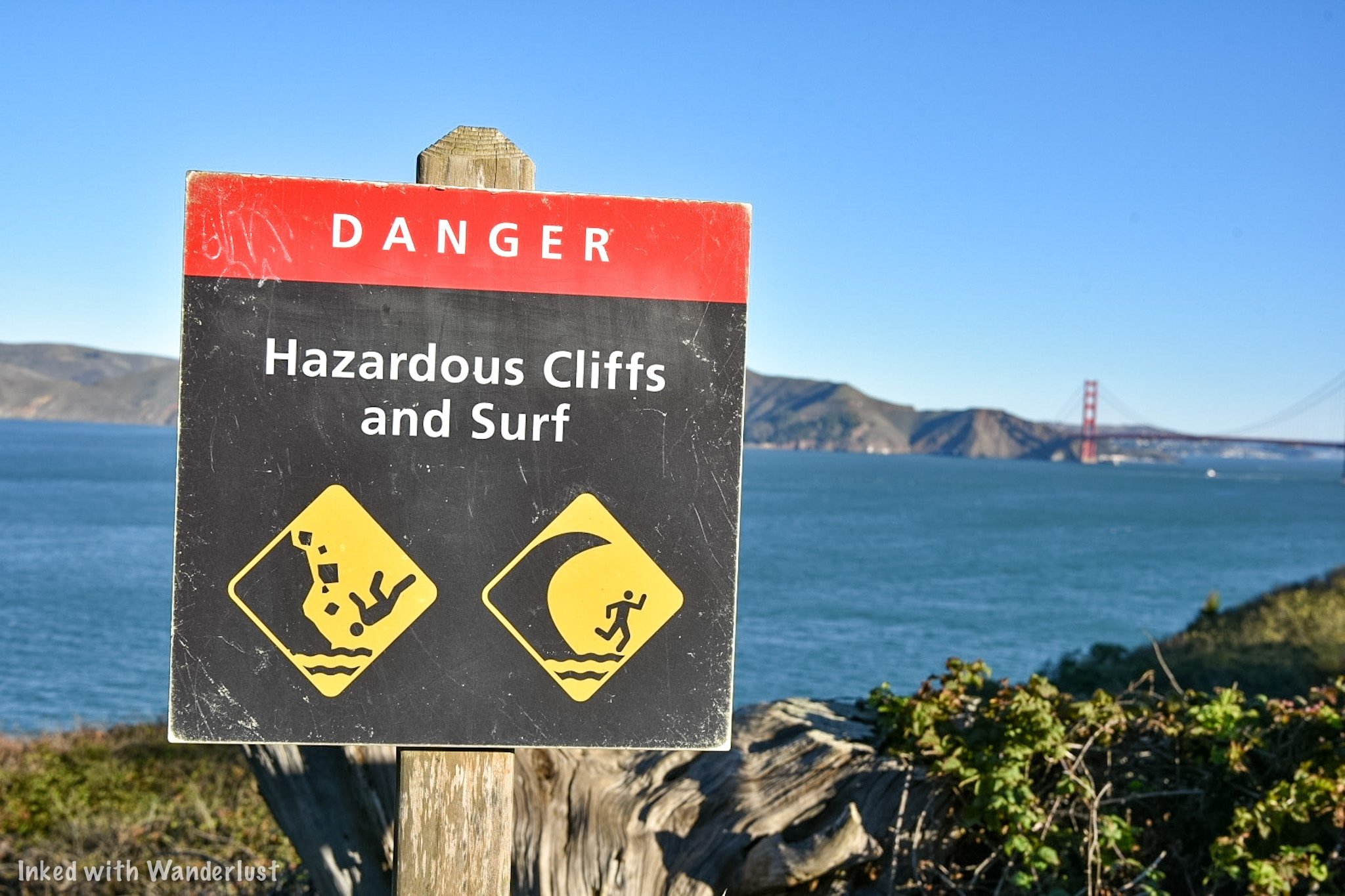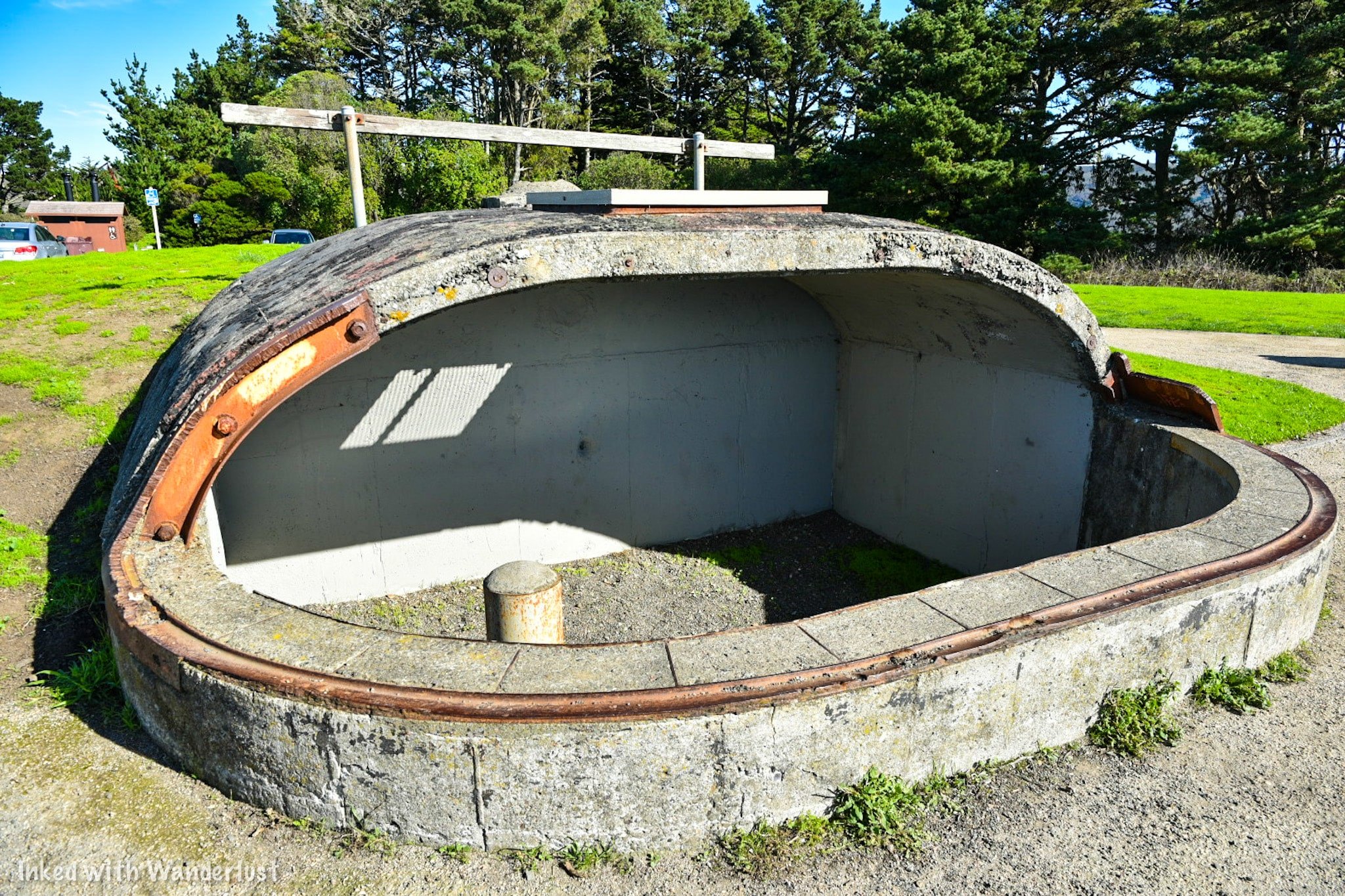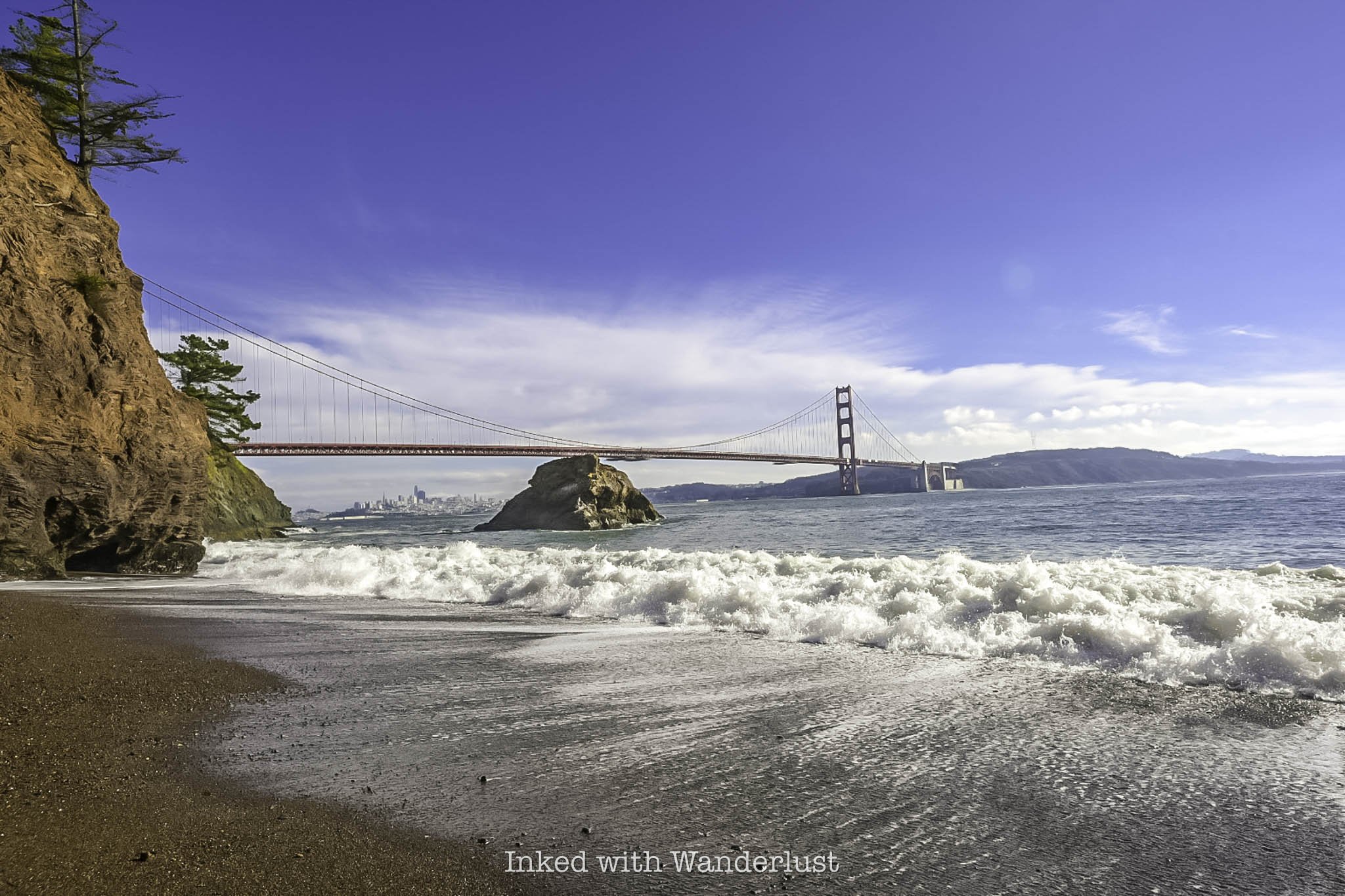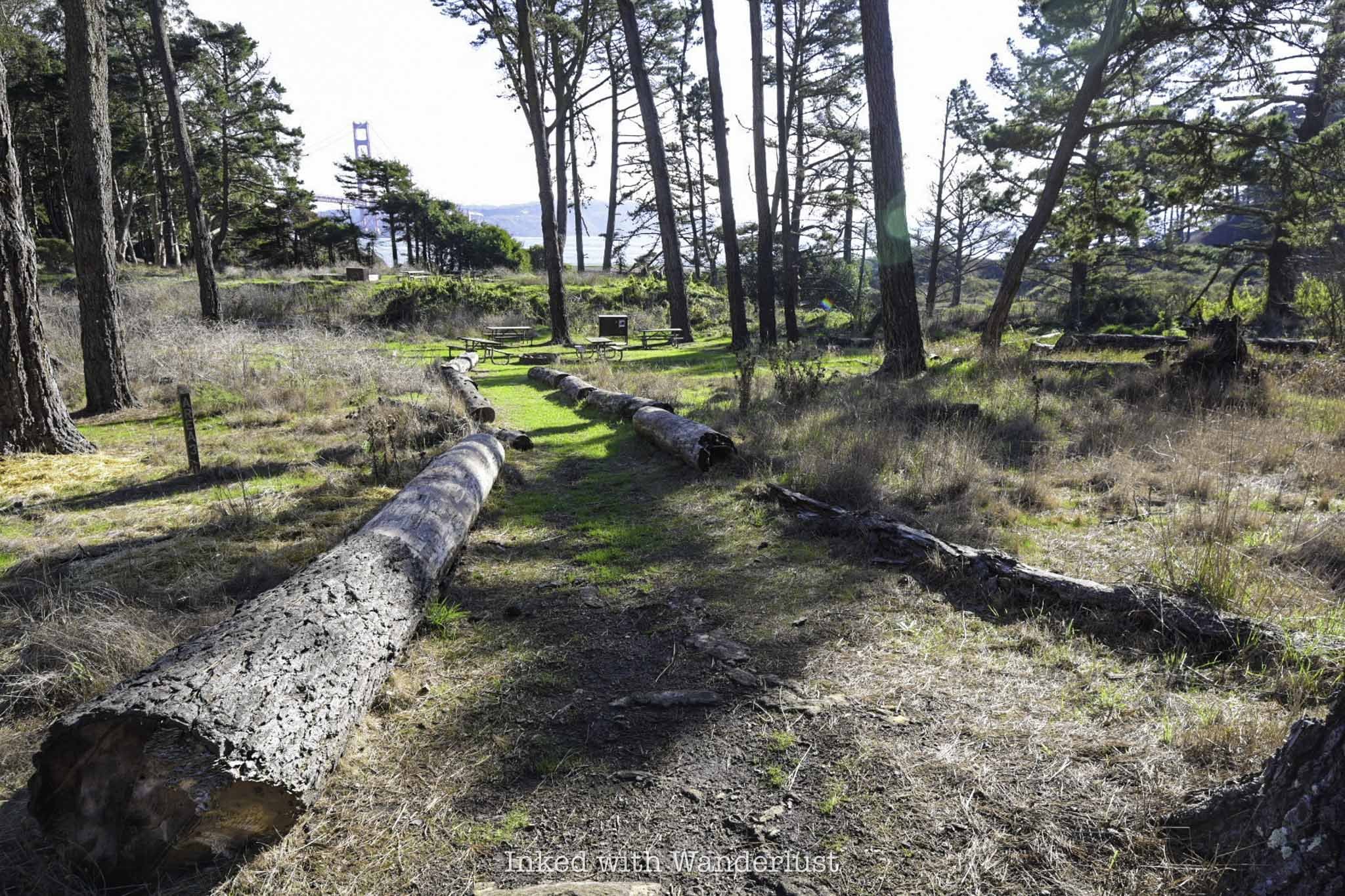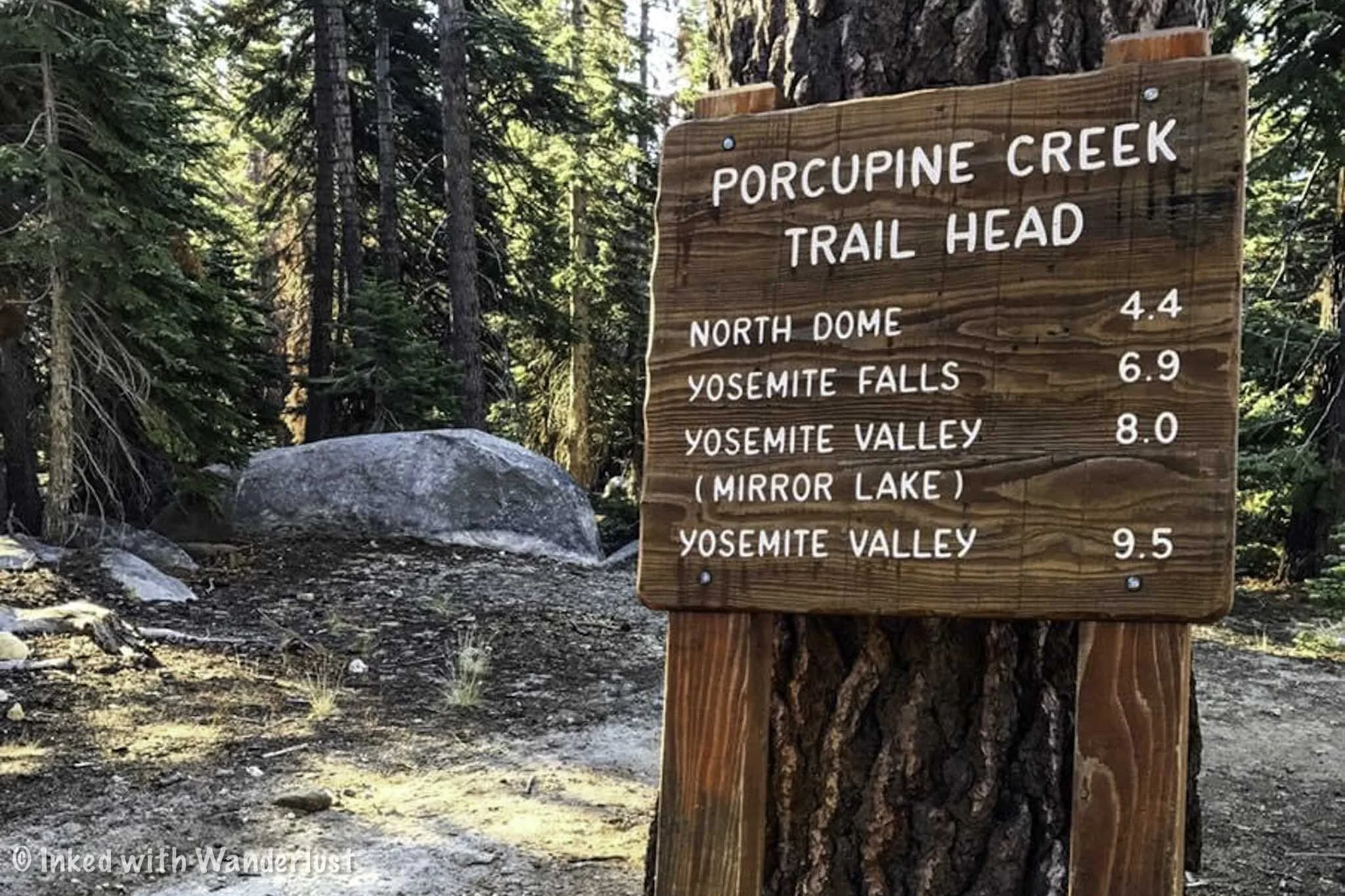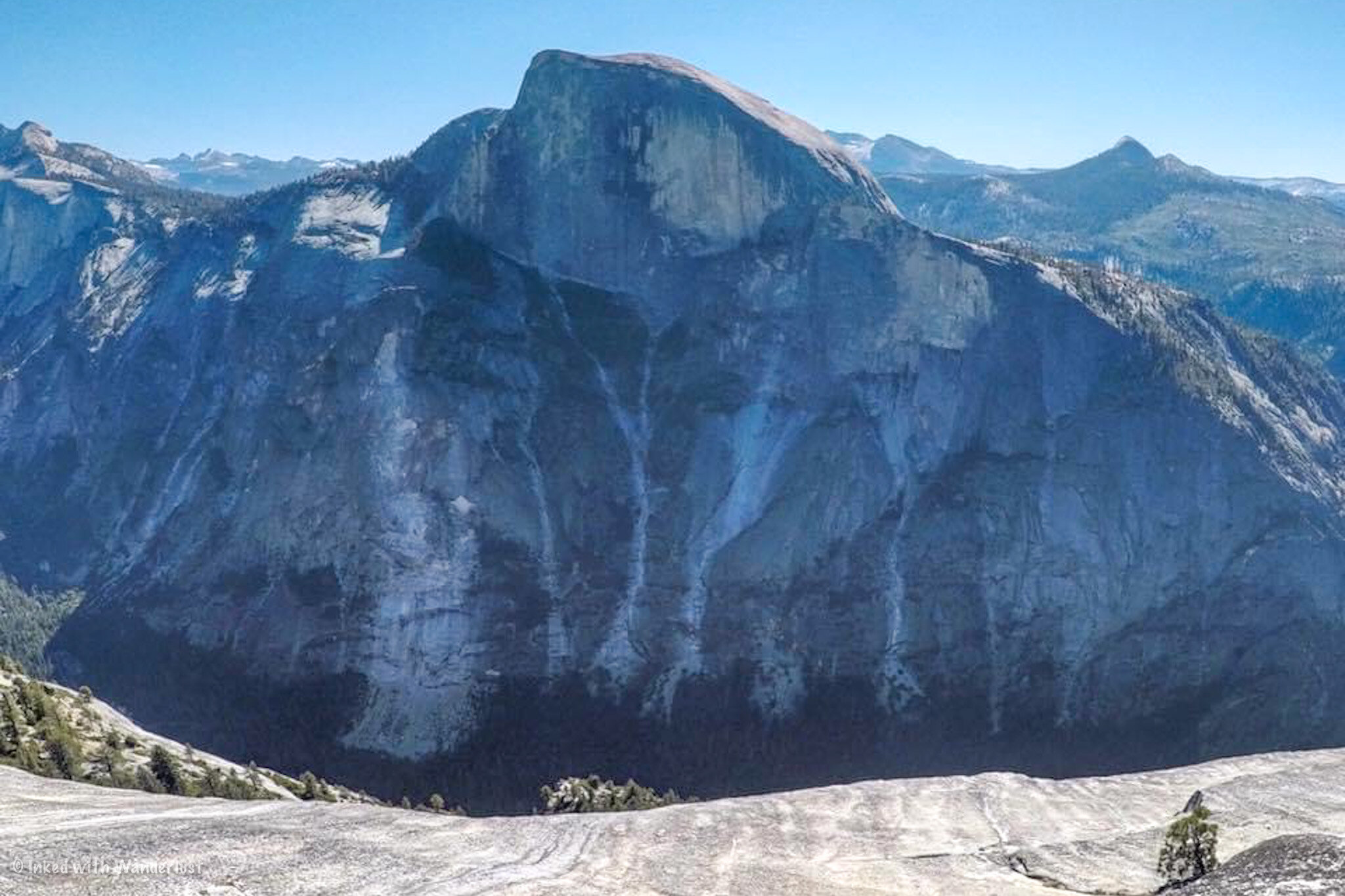Mobius Arch Loop Trail in Alabama Hills
Alabama Hills is located just outside of the small town of Lone Pine, along California’s highly scenic Highway 395. It’s known for its extensive history of being the filming locations...
Disclosure: This post contains affiliate links. If you make a purchase through these links, I may earn a small commission at no additional cost to you. I only recommend products or services that I believe will add value to my readers.
Alabama Hills is located just outside of the small town of Lone Pine, along California’s scenic Highway 395. It’s known for its extensive history of being the filming locations for dozens of movies and most of all, being the “front yard” of Mount Whitney, the highest mountain peak in the lower 48.
While there are many things to do in Alabama Hills, this post is going to focus on one of, if not the, most popular trail in the area - the Mobius Arch loop trail. It’s well known by hikers and photographers alike, for its scenery, as they’re as close to second-to-none as it gets.
The orange/brown, drab-weathered volcanic and granite rock creates a stunning contrast to the often snow-capped granite peaks that make up the Whitney Range. Best of all, Alabama Hills is on Bureau of Land Management (BLM) land and thus, is free to recreate in.
The Mobius Arch loop trail is on the short end of the spectrum but if you’re traveling along Highway 395 and need to stretch your legs for an hour, there are few places better to do that than Alabama Hills and the Mobius Arch trail, respectively.
So how long is the trail? How do you get there? What’s the bathroom and parking situation like? I answer all of these questions and more in the post below. Let’s get into it.
Trail Stats
Location: Alabama Hills in Lone Pine, California
Fees: None
Open: All year
Nearest Camping: Free, dispersed camping all over Alabama Hills. Paid, reservation-based camping at Mount Whitney Portal
Family Friendly: Yes
Cell Service: Decent
Restroom: Three port-o-potties at the trailhead
Parking: Large, well maintained dirt lot
EV Stations: None
Difficulty: Easy
Popularity: Medium
Mileage: 0.6 mile loop
Time: One hour or less
Elevation Gain: 42 feet
Condition: Well maintained and easy to follow
Features: Famous granite arch and views of Mount Whitney
Best Time: Best in Spring or Fall.
Pets: Allowed, must be leashed
Drones: Allowed with a valid permit. You can obtain one here
Hazards: Rattlesnakes have been known to frequent the area. Additionally, the trail is very exposed
Our Visit(s): 2017, 2019 and September 2024
Mobius Arch Loop Trail Parking and Directions
Getting to the trailhead for Mobius Arch is an easy endeavor. No matter which direction you’re coming from, you’ll need to find your way to Highway 395. Once you get into the small town of Lone Pine, you’ll turn onto Whitney Portal Road (at the town’s sole stoplight).
If there’s construction going on (like there was during our recent visit), you’ll have to detour for about ten miles through Turtle Creek and Horseshoe Meadow Roads, before rejoining Whitney Portal Road and then turning left onto Movie Flat Road.
If there isn’t construction going on, you’ll simply continue up Whitney Portal Road for a few miles, passing Nightmare Rock on your right (pictured below). The designs and colors on Nightmare Rock change quite often, so there’s almost always something new to see with each visit.
Shortly after passing Nightmare Rock, you’ll see the turnoff for Movie Flat Road on your right. From either direction, travel along the road for about one mile. You’ll eventually see the large, dirt-floor parking lot on your left. There’s no fee. Just find a spot and park your car.
Near where you first drove into the lot are three port-o-potties available to use. I peaked inside of them to see how maintained they are and I was pleasantly surprised by their cleanliness (as far as port-o-potty standards go, anyway). Additionally, there are two informational boards over there as well.
This trail is of the loop variety, so it doesn’t particularly matter which direction you go. For the purpose of simplicity, though, this post will focus on the trailhead pictured below. It is located on the left side of the parking lot, facing Mount Whitney and Lone Pine Peak.
Mobius Arch Loop Trail
The trail is easy to follow as it’s mostly free of debris and lined with rocks, making the pathway obvious. It begins with one of only two elevation changes along the entire trail by descending a small hill to a dried creek bed. Once you pass that, you’ll start ascending to the arch.
You’ll only gain a meager 42-feet of elevation throughout this hike so while it isn’t completely flat, it’s easy for nearly anyone. I’ve seen kids, their grandparents, and grown adults in sandals (not recommended, though) on this trail. If your dog is with you, you can bring them as long as they’re leashed or otherwise controlled.
It was a bit too warm for our dog to walk, so my wife put her into this pouch/sling we got from Amazon. She’s a small dog and fit into it perfectly. It allowed her to come with us on the hike and avoided her paws getting burned. If you have a small dog and are interested, you can find it here.
Mobius Arch is situated at around the halfway point of the trail. If you don’t make stops, you should reach it within ten minutes of starting the trail. In fact, look for the rock that looks like a skull on your left (pictured below). You’ll come upon Mobius Arch (on your right) shortly after passing that rock.
There are many arches in Alabama Hills, but Mobius Arch is the famous one of the bunch, particularly among photographers, for the ability to frame both Mount Whitney or Lone Pine Peak within it to capture creatively stunning photographs.
Even if you’re not into photography, it’s still cool to look at and say you were there. In order to frame Whitney or Lone Pine within the arch, you’ll need to go up the boulder next to it and shoot from there (as you can see in the photo that my wife captured below). You won’t be able to do it from ground level.
If you’ve never been here before or haven’t seen what Mount Whitney looks like, don’t make the same mistake I did during my first visit in 2017. I framed Lone Pine Peak inside Mobius Arch, thinking it was Whitney, then got humbled later when our waitress at Alabama Hills Cafe advised me I had photographed the wrong mountain.
The peak you see in the photo above is indeed Mount Whitney. The one that appears more prominent from this perspective is Lone Pine Peak. It looks taller and more imposing, but that’s only because Whitney is much further back. Perspective is a crazy thing.
Once you’ve gotten enough photos of the arch, simply continue along the path to complete the loop. You could also opt to return in the same direction you came, but if you did you’d be missing out on some killer landscape and a bonus arch.
Shortly after Mobius is Heart Arch. You can see it in the distance from the parking lot (and honestly, the heart shape is more defined from there), but you can also see it up close along the trail. You’ll soon come to a trail junction after leaving Mobius. To the right will be the continuance of Mobius Arch Loop, up ahead will be Heart Arch.
As stated above, you can see the shape of the heart much better from the parking lot. From up close, it only slightly resembles a heart. It’s still cool to see, though. I’ve heard that there was another arch along this trail, but unfortunately I wasn’t able to locate it.
The remainder of the Mobius Arch Loop is made up of stunning landscapes and fascinating rock/boulder formations. It’s almost like walking through a scene in Star Wars, which is fitting because a scene for a Star Wars movie (among many others) was filmed in Alabama Hills.
Despite there being multiple trail junctions, the trail is easy to follow. For most of the later half of the loop, you’ll have the parking lot within view. Worst case scenario, as long as you keep Mount Whitney and Lone Pine Peak in front of you, you’re fine.
Near the end, you’ll have one final ascent that’ll take you to the parking lot and you’ll be done. This hike is super family friendly, pet friendly and is a great way to stretch your legs during your road trip. I highly recommend checking it out.
Frequent Questions About Alabama Hills
Why do they call it ‘Alabama Hills’?
It was named for a confederate warship, the CSS Alabama (not sure why, but it is what it is)
How many movies were filmed at Alabama Hills?
Alabama Hills has been featured in more than 400 movies, 100 TV show episodes, and countless commercials/ads.
Do you need a 4X4 for Alabama Hills?
For the trail featured in this post, no. However, there are many areas of Alabama Hills where a 4x4 would be needed.
Where is the best place to camp in Alabama Hills?
You can camp at the BLM managed Turtle Creek campground, or take advantage of dispersed camping and set up almost anywhere.
Can you see Mount Whitney from Alabama Hills?
Yes. Mount Whitney is visible from most areas of Alabama Hills.
PSALM 91
Lower Yosemite Falls Hiking Trail
When visiting Yosemite Valley, you’ll immediately take notice of its collective grandeur. Everywhere you look, it’s one amazing sight after...
Disclosure: This post contains affiliate links. If you make a purchase through these links, I may earn a small commission at no additional cost to you. I only recommend products or services that I believe will add value to my readers.
When visiting Yosemite Valley, you’ll immediately take notice of its collective grandeur. Everywhere you look, it’s one amazing sight after another. One of those sights which stand out amongst most is the park’s namesake - Yosemite Falls, the tallest waterfall in North America at 2,425 feet.
When searching for the best things to do in Yosemite Valley, many will point to the Upper Yosemite Falls hike and for good reason. The views from up there are simply incredible. However, it’s a physically demanding, time consuming hike.
For those who don’t have the time (or energy) to tackle the upper falls, and simply want an up-close view of this magnificent waterfall, there’s the Lower Yosemite Falls hiking trail. It’s an excellent option for those just looking to hit up the highlights.
So where do you park to see Yosemite Falls? How long is the trail to the lower portion? Is this trail stroller friendly? I answer all of these questions and more in the post below.
Trail Stats
Location: Yosemite Valley, California
Fee: Standard park entry fee (currently $35)
Open: All year
Cell Service: Decent, but can be spotty
Restroom: Semi-large structure with flush toilets at the trailhead
Parking: Large day-use lot east of Yosemite Valley Lodge
EV Stations: Rivian Waypoint stations in the Yosemite Valley Lodge lot
Difficulty: Easy
Popularity: Mega high
Mileage: One mile for the whole loop
Time: Less than one hour
Elevation Gain: 55 feet
Condition: Well maintained
Features: Lower portion of Yosemite Falls
Best Viewed: November - June (peak flow in May)
Pets: Allowed, but must be leashed
Drones: Prohibited
Hazards: Wildlife encounters are possible, as well as slippery rocks around the waterfall (off trail)
My Visit(s): 2015, 2020, 2021 and 2024
Lower Yosemite Falls Parking
Much like the rest of Yosemite Valley, finding parking for Yosemite Falls can be quite the hassle. It’s for this reason I always encourage people to utilize the free Yosemite Valley Shuttle. It makes multiple stops at most of the valley highlights and is easy to use.
However, if you insist on using your own vehicle to get around, you’ll find parking for Yosemite Falls (either the upper or lower trails) in the lot east of Yosemite Valley Lodge, just a bit further down Northside Drive.
To get to the trailhead from here, you can, in theory, walk along Northside Drive but I don’t recommend it. The best (and safest) ways to reach it are to either cross the street and take the trail that cuts through Camp 4 or take the trail through Yosemite Valley Lodge and then cross the street to the trailhead.
Either way, you’re looking at a (roughly) half a mile walk to the trailhead, one way. I’d be remiss if I didn’t mention the parking lot directly across the street. I’m not encouraging you to park there as that area is typically reserved for hotel guests, but it is there. So do with that what you will.
Again, I’m going to strongly encourage you to utilize the shuttle. Park your vehicle at either Curry Village or Yosemite Village and hop on. Be sure you’re taking the valley-wide shuttle and not the east valley one. Shuttle service begins at 7am and ends at 10pm and again, it is free. The stop you’ll use for Yosemite Falls is #6.
Lower Yosemite Falls Trail
Both the trail to the base of the falls, and the conjoining loop, are paved paths with virtually no elevation gain to speak of. They’re also wheelchair and stroller accessible, making it an ideal outing for the entire family.
To the right of the trailhead is a semi-large structure with flushable toilets, water bootle refill stations and an array of unshaded picnic tables. It’s busy here quite often so if you’re looking to enjoy a quiet picnic, this isn’t it.
The lower section of Yosemite Falls is on full display in front of you at the trailhead so to continue, simply head straight for it and follow the path. If you’re here during the busy summer season, get here early in the morning and you’ll likely have it (mostly) to yourself.
About a quarter mile after starting, the trail will veer to the right and you’ll arrive to the base of the falls. As stated above, if you’re here in the early morning, you’ll likely only encounter a few others. After that, though, the crowds will be sizable. So pack your patience.
With few exceptions, don’t expect to see water flowing past June. Every so often there’s still flow into July, but it’s rare. If you want to see Yosemite Falls at its fullest, I recommend visiting no later than May. Once you get into July and August, the falls are all but dried up for the season.
If you feel inclined, you can boulder-hop your way to a closer view of the falls. I’m assuming Yosemite doesn’t prohibit this, as many were doing it and the ranger that was there didn’t seem to mind. Be careful, though. Those granite rocks are notoriously slick.
Most people stop here and head back the same way they came. For a more tranquil experience, traverse over Yosemite Creek via the wooden bridge and continue on the loop trail. Here, you’ll walk through a cluster of tall redwoods, which provide much needed shade. You’ll also get continued views of Yosemite Falls.
This segment of the trail was a virtual ghost town compared to what I experienced on the other side and at the base. Definitely don’t skip the other half of the loop. If nothing else, it’s a relatively peaceful escape from the crowds.
Shortly after crossing the bridge, you’ll come to a massive granite rock. There’s nothing inherently special about it that I was able to determine, but it’s crazy to think how loud of a noise that thing caused when it slammed into the valley floor all those years ago.
Shortly after the big rock, you’ll reach a segment of the trail that transitions from pavement to a wooden boardwalk. I asked about this and was told it’s because early in the season, there’s often runoff from Yosemite Creek and the boardwalk allows the runoff to flow while enabling visitors to still enjoy the trail.
In between the boardwalks there’s a small detour you can take for a view of the falls. Look for a small sign stating “falls view”. You’ll come to the view shortly after taking the detour. The view from here isn’t all that unique, but it’s still worth checking out since the detour only takes a few minutes.
If you’ve taken the shuttle to Lower Yosemite Falls, you’ll find shuttle stop #6 prior to the end of the loop, along Northside Drive to the left of the trail. Otherwise, continue on the loop to reach the trailhead, and continue to your vehicle.
Lower Yosemite Falls Common Questions
What is the difference between Upper and Lower Yosemite Falls?
Yosemite Falls is comprised of three parts - the lower falls, middle cascade and the upper falls. Together, they create Yosemite Falls. The upper portion is 1,430 feet tall while the lower portion stands at 320 feet. When adding in the middle cascade, the waterfall’s total height is 2,425 feet.
How long does it take to hike Lower Yosemite Falls?
That all depends on your fitness level and walking stride but generally, I would say less than one hour (including time spent at the base).
Is the Yosemite Falls hike hard?
The lower loop trail? No. It’s easy. If you’ve heard someone referring to this hike as hard, they were referring to the Upper Yosemite Falls hike which is a hard, physically demanding hike.
Do you need a reservation for Yosemite Falls?
Not for the falls itself but dependent on when you visit, you may need a day-use reservation to enter Yosemite.
Can you see Yosemite Falls without hiking?
You won’t be able to see the base but yes, there are many points throughout the park where you can see Yosemite Falls without hiking. A few include from the trailhead of this hike, Cook’s Meadow and Glacier Point.
Can you see Yosemite Falls from Tunnel View?
No, you cannot see it from Tunnel View.
When is Yosemite Falls dry?
Yosemite Falls typically begins to dry up around late June or early July. By late July, all you’ll be looking at is a smooth granite surface. If you want to see Yosemite Falls, plan you visit for between November to June. May is the falls’ peak flow time. If Yosemite Falls is dry during your visit, you can still see Bridalveil Falls, which flows all year.
PSALM 121:8
10 Amazing Things To Do On Yosemite’s East Side
It still surprises me how many people are completely unaware that there’s much more to Yosemite beyond the valley. Yes, the valley is littered with amazing sights. Tunnel View, Yosemite Falls, Half Dome, and...
Disclosure: This post contains affiliate links. If you make a purchase through these links, I may earn a small commission at no additional cost to you. I only recommend products or services that I believe will add value to my readers.
It still surprises me how many people are completely unaware that there’s much more to Yosemite than the valley. Don’t get me wrong, the valley is literally dotted with amazing sights like Tunnel View, Yosemite Falls, Half Dome, and the Mist Trail, so there’s no shame in spending your vacation there.
However, I put this list together to persuade you to include a visit to the east side of Yosemite during your visit. Many of the main sights can be seen in a single day, but if you want to include a few of the hiking trails (and you should), you’ll want to set aside at least two days.
This list was made with families and casual hikers in mind, which is why the more strenuous trails, such as Cloud’s Rest, were omitted. With that in mind, let’s get into my pick of 10 amazing things to do on the east entrance of Yosemite.
Is the East Entrance to Yosemite open?
Yosemite’s east entrance is seasonal. It is closed during the winter due to heavy snowpack and remains closed through early spring while road crews work to clear it. Typically, Yosemite’s east gate opens between late May and mid June, depending how heavy the snowfall was that year. For example, due to the record snowfall of the 2022/2023 winter, the east entrance didn’t open until late July.
In general, park officials will keep the gate open until the first major snowfall of the year, which typically occurs in late October or sometime in November. During this time, the only way to access this side of the park is via backcountry skiing.
1) Drive Tioga Pass
If you’re coming from Lee Vining, this part is built into the trip. Tioga Pass is California’s highest automobile pass in the state and is the access road to Yosemite’s east entrance. Most of it is also closed during winter.
From the valley, follow the signs to Highway 120 and keep driving until you’re outside of the east gate and head down to Lee Vining. While you’re there, be sure to grab some lunch at Whoa Nelly Deli or Bodie Mike’s BBQ.
This drive is simply breathtaking and is a must see. Drive cautiously, though. The is narrow, the drop-offs are steep, and there are no guard rails. Additionally, keep an eye out for falling rocks. Some notable features along the pass include Nunatak Loop, Saddlebag Lake, Lake Ellery, and the Twenty Lakes Loop trail.
2) Gaylor Lakes Trail
Gaylor Lakes is one of the first hiking trails you’ll come across after arriving. In fact, the parking lot is immediately to your right upon driving through the gate. People who are hiking up to the summit of Mount Dana also park here, so it fills rather quickly.
Gaylor Lakes is a moderate-level hike and rather short in length, but the first mile or so is an exhausting uphill slog above 10,000 feet. After the pass, it drops you back down and it is there where you’ll come across the first of a series of lakes. Keep going and you’ll discover historic miners cabins.
Trail Length: About 3 miles, out and back
3) Elizabeth Lake Trail
This is another hike on the easier side. There is some elevation gain along the way, but nothing difficult and for the most part, it’s barely noticeable. It’s mostly flat, short in length and has an epic payoff at the end. Unicorn Peak is the mountain shadowing the lake and is climbable if you have any energy left to burn.
The official trailhead is located at the back end of Tuolumne Meadows campground. To get there, simply drive through the campground and park by the restrooms. If it is closed, you’ll need to park in the lot out front and walk to the trailhead. This will add another couple miles overall.
Trail Length: 5 miles, out and back. 7 miles if hiking through the campground
4) Olmsted Point
Olmsted Point is one of the east side’s most popular attractions due to its easy access and epic view of Half Dome. The lot can comfortably hold around a few dozen vehicles, but tour buses do utilize it and thus, it fills up quickly. Especially on weekends and in the summer months.
Try to get here as early as possible to guarantee a parking spot (being here for sunrise is an experience all its own). It will fill up later in the day but people tend to come and go often. So worst case, you may just have to circle around a couple times.
Pro tip: If you have extra energy to burn, head up the granite slope across the road because from there, the views of Half Dome and Tenaya Lake are epic
5) Lembert Dome & Dog Lake Trail
Looming 800 feet above Tuolumne Meadows is Lembert Dome, one of the most recognizable landmarks on the east side. Hiking to the top of Lembert Dome is possible via a rather short, but steep in some places, trail. Once you’re up there, the views of Tuolumne Meadows are outstanding.
Additionally, you can add some milage to this hike but taking the detour to Dog Lake, which is just behind Lembert Dome. Why did they name it, “Dog”, you ask? I have no idea, but it’s a beautiful lake regardless and worth the short detour.
While this hike starts out on flat terrain, it soon turns into an uphill climb that will make you question your desire to complete the hike. Once you get past that, though, the trail smooths out again (until you reach the dome, that is). Despite the climb, it’s completely doable as a family hike.
Trail Length: 2.8 miles, out and back for both Lembert Dome and Dog Lake
6) Tenaya Lake
Tenaya Lake is the largest and easily accessed of all Yosemite lakes. No hiking required. Simply find a parking spot in the lots at either end of the lake or find a spot along the shoulder.
In the dead of summer, the crowds here can get particularly large but still nowhere near the levels Yosemite Valley receives. To guarantee yourself a good spot on the lake itself, arrive early.
There’s an easy going trail that circles the lake. You won’t have to worry about ups and downs as it’s mostly flat but early on in the season you will encounter high water levels at the lake’s outlet on the west end. Late in the season, however, it’s a non-issue.
Pro Tip: Tenaya Lake is one of the most scenic lakes you could possibly paddle board on. Bring this highly-rated inflatable SUP board along with you
7) Pothole Dome
The easiest of all the domes, Pothole stands on the western end of Tuolumne Meadows and is mild in difficulty. It’s also hard to miss as it’s easily visible from the road.
From the parking lot (10-12 cars max) you’ll find the trail that takes you straight to it. As tempting as it may be to cut straight across, please keep to the trail. This area is part of a years long effort to grow more trees in the meadow.
Once you reach Pothole, simply find a section that looks to be in your comfort zone and go up. There’s no official path from this point. Alternatively, keep on the trail and it’ll eventually take you to beautiful cascades on the Tuolumne River.
Pro tip: Go as high as you can. The views of Tuolumne Meadows and Cathedral Peak are amazing from the top
8) Mono Pass Trail
This hike falls under the category of sorta long but still moderate. It’s mostly flat until you reach the fork to Spillway Lake and starts to head up to Mono Pass at 10,599 feet.
Along the trail you’ll pass beautiful river streams, meadows, and shaded pines (until you reach the pass, that is). Once you pass the boundary of Yosemite and reach a rocky shelf, you’ll have an epic view of Sardine Lake and a slither of Mono Lake in the same frame.
Trail Length: 7.8 miles, RT if you go to the Sardine Lake overlook. 7.4 miles if you don’t
Pro Tip: Shortly after arriving at the pass but before the lake you’ll see an unmarked trail spurring off to the right. Take it and in a quarter mile you’ll see a few old 1800’s miner cabins
9) Tuolumne Meadows
Few things beat taking a stroll through the always beautiful, Tuolumne Meadows. It is probably the most tourist heavy attraction on this list but don’t fret, you’ll have plenty of elbow room.
Some notable features of Tuolumne Meadows are frequent deer & bear sightings (mostly in the morning), the Merced River, Pothole Dome, Parsons Memorial Lodge, Soda Springs, and more!
Pro Tip: If you’re here in spring or early summer, bring mosquito repellant and lots of it. If you’re not a fan of DEET, you can try this DEET-free citronella spray. I use when I hike and it does a great job at keeping mosquitos, bees, and other insects off of me (it smells fantastic as well)
10) Cathedral Lakes Trail
Rounding out the list is one of the premier hikes on Yosemite’s east side and easily one of the top hikes in the entire park, Cathedral Lakes. This one is mega popular among the Instagram crowd and is a regular stop along the John Muir Trail (JMT).
The trail is moderate in difficulty but the first couple miles or so will be a steady uphill slog. You’ll see two lakes, both of which are worthy of your efforts. Lower Cathedral is the largest of the pair but the upper lake, in my opinion, wins in the scenery department.
Trail Length: 7 miles, out and back if doing one lake. 8 miles if doing both
Hike Through the Historic Donner Summit Tunnels
When searching for the most unique and best hikes in Northern California, many will point to areas like South Lake Tahoe, Yosemite National...
Disclosure: This post contains affiliate links. If you make a purchase through these links, I may earn a small commission at no additional cost to you. I only recommend products or services that I believe will add value to my readers.
When searching for the most unique and best hikes in Northern California, many will point to areas like South Lake Tahoe, Yosemite National Park, and famed Mono County, and for good reason. Those areas have some of the most beautiful hiking trails in the state.
Just a bit outside of Lake Tahoe proper, near the historic gold mining town of Truckee, is one of the most unique hikes you’ll come across anywhere - the Donner Summit Tunnels.
The tunnels were built in 1867 to accommodate the first train passage through the Sierra Nevada Range. Built primarily by Chinese laborers, nothing but hand drilling methods and explosives were used to carve through the granite-based Mount Judah.
The tunnels saw the first train traffic shortly after completion in 1868, and were used as recently as 1993, when they were then decommissioned. Today, the property is still owned by Union Pacific, who have been kind enough to allow people to freely explore the tunnels.
So how do you get to the Donner Summit Tunnels? What’s the parking situation like? What can you expect on this hike? I answer all of these questions and more below. Let’s get into it.
Trail Stats
Location: Donner Summit in Norden, CA
Fee: None
Open: Mostly in Spring, Summer, and Fall. Difficult to impossible to access in Winter.
For: Everyone
Cell Service: Spotty
Restroom: None
Parking: Large dirt lot at the trailhead. There are also pull-outs on the side of the road, but you’ll be backtracking on the hike
EV Stations: None
Difficulty: Easy
Popularity: Moderate
Mileage: About 5-miles, out and back
Elevation Gain: Just shy of 400 feet. The trail is mostly flat
Condition: Not maintained, but completely doable
Features: Historic trail tunnels, China Wall, petroglyphs and vast views.
Pets: Allowed on leash
Drones: No signs prohibiting it, but I saw a few people flying theirs
Hazards: Uneven ground, loose gravel, low visibility, steep drop offs, and potential wildlife encounters.
My Visit(s): July 2024
Recommended Products for this Hike
Camera Tripod (you’ll need it for the low-light situations)
Citronella Spray (a Deet-free way to keep the bugs off of you)
DJI Drone (for even better photos/video of the area)
How to Get to Donner Tunnels
Most people access the Donner Tunnels from Interstate-80, as it’s easy and straight forward. If you’re coming from the direction of Reno or Truckee (westbound), take the Donner Lake Road exit. When you get to the bottom, turn right on Donner Pass Road to head up the pass.
Less than a mile after crossing the Donner Summit Bridge, look for the sign in the photo above (Sugar Bowl Road). You’ll turn left here. Shortly thereafter, look for an unmarked dirt road on your right. This will take you to the parking lot.
Coming from Sacramento (eastbound), you’ll take the Donner Pass Road exit for about four miles before turning right onto Sugar Bowl Road to the parking lot. If you’re coming from Lake Tahoe, you have a couple options:
From North Lake/Sand Harbor area: Make your way to North Shore Boulevard (CA-217) and go north. Then, merge onto I-80 west for a short time before taking the Donner Pass road exit and head up the summit to the parking lot.
From South Lake/Emerald Bay area: Travel north on CA-89 and continue onto Highway 28, before turning left onto North Shore Boulevard (north). From there, follow the same directions as described above.
Donner Tunnels Parking Lot and Trailhead
The parking lot for Donner Tunnels is a circular dirt lot with no actual parking spaces laid out. It’s essentially park wherever you can find space. If you arrive early (like I did), you’ll have no trouble finding a spot. Later in the day is when it starts to fill, as shown in the photo above.
While any vehicle can access this lot, I do need to warn you about all of the tire-busting rocks. Union Pacific doesn’t maintain this lot at all and as such, there are rocks all over the place that have the potential for ruining your day. Take it slow and you should be fine. The good news is there’s no parking fee.
The unsigned trailhead is located just off the parking lot through a heavily graffitied red gate. You’ll find the first of several tunnels after you walk underneath the road you took to get here.
Donner Tunnels Hike
From here, you’ll work your way through a series of tunnels, each with a varying level of length (and graffiti). The first one from the parking lot is fairly long and dark, but you’ll always have the light at the end in sight.
Don’t be fooled by the amount of light in the photo above. That was me using my camera’s settings so I could show you the detail. It’s actually very dark in here and in my opinion, a cell phone flashlight doesn’t cut it. Which is why I recommend bringing a flashlight with high lumens.
In these tunnels and the upcoming ones, you’ll likely hear, smell, and possibly even see bats in the tunnels. We never saw them, but we did hear and smell them. As is the case with most wildlife encounters, don’t go looking for trouble and you likely won’t find it. In other words, don’t bother them.
After the first tunnel, you’ll briefly enter a snow shed before walking back out into a clearing with sweeping views of Donner Lake and the surrounding mountains. On this stretch, you’ll pass by some petroglyphs on your left and walk over the historic China Wall (pictured below) before entering the next tunnel.
The China Wall is a 75-foot high hand-built retaining wall that helped keep the trains propped up as it passed between the two tunnels. Take a moment to check it out. It’s amazing what the laborers were able to accomplish without the help of modern equipment.
Also along this stretch is the ability to climb up onto the top of the tunnel you just left. You’ll get an awesome perspective for photos. Just be careful as there’s no established way up and the granite rocks are slippery. Going back down is a bit sketchy.
From here, you’ll enter the next tunnel and go through a series of several more. You’ll go through sections where enough light passes through the slits in the walls, enabling you to see without a flashlight. Then you’ll hike through sections of near-complete darkness as well.
On top of the darkness, the ground you’ll be walking on is on uneven, loose gravel with occasion larger rocks. Additionally, and particularly if you’re here while the snowpack is still melting, you’ll also have standing water and potential icy spots to traverse.
The walls of the tunnels are literally covered in graffiti. Some are actually artistically well done while other pieces are simply words/political statements or nondescript images. While I do think it’s a shame that a historical site like this has graffiti all over it, I have to admit that it does add a certain vibe to the overall experience.
If you’re bringing small children, be warned that some of the graffiti art is highly inappropriate for young eyes. Thankfully, most of it is difficult to make out, or even see in the darkness, so I wouldn’t let it stop you from bringing them. Just something to be conscience of.
The hike can be as short or as long as you want it to be. During our hike, I noticed most people turn around after the second tunnel, but I recommend sticking it out and keep going to the end of the final tunnel. If you do, you’ll be rewarded with an epic, unobstructed view of Donner Lake (especially if you climb on top of the tunnel).
In conclusion, this hike is fantastic. Even if you don’t care about the historical aspect of it, it’s worth it for the views and photography opportunities alone. Additionally, because there’s so much to explore, you could hike the Donner Tunnels multiple times over and always see something new.
When you’re finished, consider heading over to nearby Donner Memorial State Park and see the site where part of the ill-fated Donner Party attempted to wait out winter and fight off starvation. Additionally, Emerald Bay State Park is about an hour away and more than worth the drive.
EXODUS 13:21
Hike The Waterfall Trail In Grover Hot Springs State Park
Nestled within a quiet corner of the eastern Sierra Nevada mountains lies an underrated, little-known gem in the…
3 minute read | contains affiliate links
Nestled within a quiet corner of the eastern Sierra Nevada mountains lies an underrated, little-known gem in the California state park system; Grover Hot Springs.
Grover doesn’t have the same notoriety as Yosemite or even nearby Lake Tahoe, but that’s where it gets its charm. It isn’t dense in crowds, so it’s incredibly easy to spend a serene day (or two) in its pristine setting.
In 2021, the park was shuttered due to damage sustained by the Tamarack Fire. Many trees and other shrubbery were charred, in addition to the parks infrastructure (including the hot springs complex).
Thanks to the efforts of park staff, the park’s campground and hiking trails reopened in time for the 2022 summer season. The hot springs, unfortunately, did not reopen and remain closed at the time of this writing.
In June 2023, I returned to the park to hike the Waterfall Trail. It’s a short and sweet hike terminating at an incredible 50-foot waterfall with multiple cascades.
The trail is perfect for families as there’s little elevation gain, it’s easy to follow and you’re treated to an amazing award with little effort required. Additionally, your furry, four-legged kids can join you.
So how do you get there? How many miles are involved? Is parking available? I answer all these questions and more below. Let’s get into it!
Exciting news for our readers!
We’re excited to introduce the all-new "Inked with Wanderlust" online store!
We're thrilled to bring you a fantastic collection of wanderlust-inspired merchandise. Celebrate your love for travel and exploration with our stylish apparel and accessories, designed to ignite your sense of adventure.
Discover a range of unique designs that capture the spirit of wanderlust, from cozy hiking-themed t-shirts to charming accessories that make your wanderlust spirit soar!
Visit our online store today and start your journey of style and adventure. Happy exploring!
Trail Stats
Location: Grover Hot Springs State Park. Markleeville, CA
Fee: $8 day-use fee
Payment Type: Cash only. No digital pay stations
Open: Seasonally
For: Hikers
Restroom: In the campground and near the hot springs complex
Parking: Small lot near the campground, large lot near the hot springs (currently inaccessible)
EV Stations: None
Difficulty: Easy
Popularity: Medium to low
Mileage: 1.5 miles, one way
Time: 45 minutes to one hour
Elevation Gain: 90 feet
Condition: Maintained, but damaged from the Tamarack Fire
Features: 50-foot water, alpine meadows, craggy peaks
Pets: Allowed on leash
Drones: Not allowed
Hazards: Soft soil, downed trees and trees with potential to fall are still present. Additionally, this area sees heavy bear activity
My Visit(s): 2017, 2018 and 2023
Getting to Grover Hot Springs SP
As stated above, Grover is located in the beautiful eastern pocket of the Sierra Nevada mountain range so no matter which route you take, the drive is going to be scenic.
There are multiple routes to take depending on which direction you’re coming from:
Lake Tahoe: You’ll simply go south on CA-89
Sacramento: Travel east on US-50 and then south on CA-89
Bridgeport: Go north on US-395 and then north on CA-89
Reno: Head south of US-395/US-88, before going south on CA-89
My recommendation, unless you’re coming the opposite side, is to choose a route that traverses over Monitor Pass (pictured above). It’s a jaw-dropping, beautiful drive and my personal favorite.
Even if you’re coming from the opposite side, try to build driving through Monitor Pass into your travel plans. Trust me, it’s worth it.
Once you’re in Markleeville proper (you’ll pass numerous shops and restaurants), turn onto Montgomery street and continue straight until it terminates at Grover Hot Springs.
Grover Hot Springs Parking & Fees
Presently, there is only one option for parking at the park; near the campground (or in it if you’re camping). Assuming you’re just hiking, you’ll park in a small dirt lot with enough room to accommodate a dozen or so vehicles.
Once the hot springs reopens there’s a much larger lot you could utilize there. The trail to the waterfall can be accessed from either, though, and neither one is any longer than the other.
To use the hiking trail, you’ll need to pay an $8 day-use fee. There are no digital pay stations, so fees must be paid in cash via the yellow envelopes. Be sure to keep the receipt on your dash.
If you purchase a pass to the hot springs once they reopen, that pass includes the park’s day-use fee, FYI.
Where Does The Waterfall Trail Begin?
The trail goes by a few names but for all intents and purposes, I’ll refer to it as the, “Waterfall Trail”, in this post as it is the main (and only) trail in the park proper.
There’s a trailhead near the day-use parking lot by the campground and another just past the hot springs complex. They both eventually intersect.
I have taken both routes but in order to present the most current information, this post will focus on the trailhead near the campground.
The Waterfall Trail
The trail begins along an accessible wooden boardwalk through a beautiful alpine meadow. It’s one of the few areas of the park that wasn’t heavily affected by the fire.
Along the boardwalk, there are numerous informational boards detailing the park’s history and development as well as benches to relax and take in the scenery on.
It’s quick, though, as you’ll soon reach a cluster of pine trees where the boardwalk ends and becomes a gravel/dirt path.
You’ll soon approach the only un-jumpable stream crossing of the trail. At worst, it’s ankle deep and will undoubtedly evaporate as snow-melt eases.
Shortly after this stream crossing, you’ll come to a slight fork. Coming from the direction of the campground, you’ll want to continue straight towards the charred trees.
This will be your first real example of the damage done by the Tamarack Fire. Many trees remain standing, but just as many were reduced to ash and/or had to be downed.
On the forest floor, you’ll see greenery sprouting through, trying to breathe new life into the area. You can also see trees shedding charred bark.
You’ll get an up-close-and-personal look at not only the ugly, destructive side of a fire, but the beauty and new life it brings about as well.
Soon, the trail will align with the creek on your left and that’ll continue throughout the rest of your hike until you reach the waterfall.
Shortly after aligning with the river, you’ll come to another fork. Continuing straight will take you to the falls while going right will take to Burnside Lake (5-miles).
From here, you’re only half-a-mile away from the falls. However, you’ll first have to negotiate the one and only “adventurous” section of this trail; the boulder field.
Initially, the trail appears to vanish, but fret not. Simply look to your right and you’ll notice a trail heading up and into the boulder field in front of you.
Negotiating it isn’t difficult and doesn’t require any rock climbing know-how. A little bit of boulder hopping and common sense will get you through just fine.
I’ve always found that keeping to the left side of the boulder field offers the path of least resistance. However, any route you decide to go with will get you there.
Once you get to the other side of the boulders, you’ll get your first glimpse of the waterfall ahead of you. Actually, you’ll likely hear it long before you see it.
Continue straight and you’ll soon reach the waterfall.
To view the falls from the base, you’ll need to break away from the trail proper and take a spur trail down. There isn’t a lot room down there so plan to arrive early if you want it to yourself.
If you continue further up the trail, you’ll get much closer the waterfall’s crest and have considerably more elbow room if you’re hear on a particularly busy day.
While this is the official conclusion of this portion of the trail, you can continue to explore further up and find more waterfalls.
If you’re not feeling up to it, though, spend as much time here as you please and when ready, go back the same way you came.
I hope you’ll consider hiking this trail. Whether solo, with a partner, or your family. I have no doubt you’ll love it as much as I do.
Travel safe, travel responsibly.
Check Out These Amazing Nearly Destinations!
Please support this website by subscribing to the newsletter below.
Thank you for reading.
How To Hike The Burney Falls Scenic Loop Trail
Burney Falls is one of the most visit state parks in all of California. Prior to covid, the park would see an average of 4,000…
3 minute read | contains affiliate links
Burney Falls is one of the most visited state parks in all of California. Prior to covid, the park would see an average of 4,000 daily visitors. Since covid, that number has more than tripled to an average of 13,000.
It’s no wonder, either. Burney Falls is a spectacular waterfall. On top of that, it’s one of the most easily accessible waterfalls as it can viewed from an accessible viewing deck just steps away from the parking lot or by taking a short, paved trail to the base.
Many people are completely unaware of the hiking trails contained within the park. So we’ve decided to write a post about the most popular one, the Burney Falls Scenic Loop. It’s a beautiful trail that begins at the rim of the falls and concludes at the base.
If you’ve never been there, you should check out our comprehensive guide on Burney Falls. In it, we cover a lot of information such as directions, camping, hiking trails, best time to visit and more! So if you’re looking for that information, you should definitely read that one and come back here.
Let’s get into it.
Quick Stats
Location: McArthur-Burney Falls State Park
Fee/Permit: $10 per vehicle to enter the park
Open: Year round
For: All visitors/hikers
Parking: Semi-large, paved lot
Restroom: At the visitor center
EV Stations: None
Drone Use: Not allowed
Difficulty: Easy
Popularity: Highly trafficked
Time: 1 hour or more
Milage: 1.2-miles
Elevation Gain: 167-feet
Trail Condition: Well maintained
Main Feature(s): Burney Falls
Pets: Not allowed
Special Notes/Hazards: Though it’s a beautiful trail, Burney Falls will be out-of-view for the majority of the hike
Our Visit(s): October 2016, August 2019, & May 2022
Trailhead, Parking & Direction
The trailhead for the Burney Falls loop trail is directly across the road from the park’s visitor center and parking lot. You’ll see a sign up ahead indicating as such (pictured above).
The parking lot is fairly large, probably closer to medium sized, actually. As we covered in our guide to Burney Falls, this lot tends to fill quickly in the summer months. So if you go during that time, we highly advise that you plan for an early arrival.
Once you’ve parked and paid your entry fee ($10), cross the street and head towards the rim of the falls to begin your hike. There’s a viewing deck where you can get a from above view of the falls.
Burney Falls Loop Trail
If all you want to do is go to the base of falls and leave, bear right towards the stairwell. It’ll only take a few minutes to get down there as it’s only a third-of-a-mile along a well-maintained path.
If you’re dead-set on the loop trail (as you should be) you’ll want to bear left along the dirt path. This trail also takes you to the base, just not as quickly.
Unfortunately, Burney Falls won’t be visible for much of the trail. In fact, you’ll only get the full view once you’ve circled down to the base. Shortly after the beginning of the trail, you’ll get one final look at it through some trees.
After a short time, you’ll arrive at the serene, ‘Fisherman’s Bridge’, crossing Burney Creek just upstream from the top of the falls. If you’re an angler, there are great spots here along the creek to fish for Rainbow Trout.
Be sure to stop near the middle of the bridge to take in the views. You won’t be able to see the crest of Burney Falls from here, but you’ll get a great view looking upstream of the creek.
After the bridge, turn right and you’ll enter a heavily forested portion of the trail filled with Douglas Firs and Oaks. Also along this stretch are a number of benches. Feel free to rest your feet for a moment and take in the sights around you.
The trail will begin to descend slightly along a series of gentle switchbacks. Before hitting the descent, you’ll pass a junction to the Pacific Crest Trail and a series of rocky steps built into the trail. No need to worry as the steps are easily navigable.
Near the halfway mark down the switchbacks you’ll get your first glimpse of Burney Falls since the start of the trail. Again, it’s through a collection of trees but it’s a gorgeous view nonetheless.
Rainbow Bridge Junction
At the bottom of the switchbacks you’ll come to another footbridge crossing over Burney Creek. This one is named, “Rainbow Bridge”. Much like the first one, stopping here to take in the views of the creek would be worth your while.
From here, you have two directions in which you could go. Going left from Rainbow Bridge will take you on a detour to Lake Britton. This is a solid option as the picturesque lake provides many recreational activities.
*Note: The detour to Lake Britton from this junction is closed for the 2022 season due to heavy storm damage to the trail. No word on when it’ll open. To reach Lake Britton, you’ll need to utilize the trail leaving from the rim of the falls and through the campground.
To keep to the loop trail and continue on to the falls, however, you’ll want to bear right as you’re walking off of the bridge. Along this stretch, you’ll pass a huge boulder field on your left. Showcasing evidence of the area’s volcanic past.
Soon, you’ll begin to hear the sounds of Burney Falls crashing into the pool below it and before long, it’ll come into view. There are many spots along this stretch of the creek to get an excellent side view of the falls. You’ll need to scramble a bit but trust us, it’s worth it.
The Base of Burney Falls
This is the main viewing area of Burney Falls and is where you would’ve ended up had you gone right at the trailhead instead of left. This area is defined by a perimeter made of rocks and is a somewhat small area (considering the crowds this park sees).
For a closer look - or to go for a swim in the pool below the falls - you’ll need to scramble down a rock field. The constant mist from the falls makes most of these rocks very slick. So be sure to watch your footing.
If you’re here on a particularly busy day (pretty much any day during the summer season) expect to find many, many people to be here. It doesn’t take long before that viewing area - and even the rock field - becomes a shoulder-to-shoulder situation.
We’ve never been here during winter, but we feel spring is the best time to go, crowds wise. Our most recent visit was the first week of May, 2022, and we practically had the falls all to ourselves. A few people came and went but that was it.
Once you’ve gotten your fill of the views, continue on the trail by heading up the paved switchbacks back to the rim (where you first began). Along the way, you’ll encounter several interpretive signs detailing the development and history of Burney Falls and the area.
It may be a persistent climb back to the rim but fret not, it isn’t that bad. The switchbacks are gentle and towards the end, there’s a couple sets of stairs to help with the final push.
Once you’re back at the rim and satisfied with your visit to the park, simply cross the road to get back to the parking lot. Or better yet, stop by the visitor center before leaving. They have many interesting/informative exhibits.
Which Direction Should You Go?
That’s entirely up to you, but we wrote this trail guide in the clockwise direction as that was the direction we went and feel it’s the way to go. The reason is because of the epic payoff at the end (Burney Falls).
However, there’s nothing that says you can’t go counter-clockwise. If you do, you’ll arrive at the falls after just a third-of-a-mile. To continue past that, head down the paved trail along the creek.
When you reach Rainbow Bridge, simply cross it and head up the dirt switchbacks and onward to Fisherman’s Bridge. There’s no right or wrong. Either direction will provide the same great views and experience.
*Tip: Be sure to read our comprehensive guide about Burney Falls State Park. It’ll help you plan your visit with information on weather, camping, amenities, directions and more!
Your Thoughts…
Does this sound a trail you and your family would enjoy hiking together? Have you been to Burney Falls or have you been dying to go? Tell us about it in the comments below. We love love hearing from our readers!
Please support our website by sharing it with your family and friends.
Thank you for reading.
Hedge Creek Falls: A Short Hike To An Incredible Waterfall
While not a grand sight or a long hike deep into the wilderness, Hedge Creek Falls still packs a punch as a highly scenic…
3 minute read | Contains affiliate links
While not a grand sight or a long, deep hike into the wilderness, Hedge Creek Falls still packs a punch as a highly scenic, simple trail terminating at the 35-foot waterfall spilling over a hanging wall of basalt.
The trail’s unique feature, aside from the waterfall itself, gives hikers the rare chance of going behind the waterfall via a large cleft in the rock.
Hedge Creek Falls is perfect for families with small children, pets, or anyone who happens to be driving by and wants to stretch their legs. Both the parking lot and trailhead are conveniently located right off Interstate-5.
In this guide, we’ll cover everything you’ll need or want to know about hiking to Hedge Creek Falls. Let’s get into it.
Quick Stats
Location: Dunsmuir, CA
Fee/Permit: None
Open: All year
For: Hikers
Parking: Small dirt lot across the street from the trailhead
Restroom: Port-O-Potty in the parking lot
EV Stations: None
Drone Use: No signs stating you can’t
Difficulty: Easy
Popularity: Moderate
Time: Less than an hour
Milage: 0.7-miles, out and back
Elevation Gain: 200 feet
Trail Condition: Well maintained
Main Feature(s): 35 foot waterfall, views of Mount Shasta, and views of the Sacramento River
Pets: Allowed on leash
Special Notes/Hazards: Vehicle break-ins are common in the trail’s parking lot
Our Visit(s): May 2022
*Please practice leave no trace principles and keep to the trail
Trailhead and Parking
The Hedge Creek Falls trail is probably one of the easiest trailheads on earth to find. Both it and the parking lot are located directly off Interstate-5 on Dunsmuir Ave.
Whether you’re traveling south or north on I-5S, you will see signs for Hedge Creek as you get close. From either direction, take exit #732 and go right on Dunsmuir Ave and it’ll be right there.
If you’re coming from Burney Falls, simply travel north on CA-89 for about 56-miles before jumping on Interstate-5 south for a short time. From there, follow the same directions above.
The parking lot is of the dirt variety and small. It fills rather quickly in the summer so the sooner you can arrive, the better. To find the trailhead, simply cross the street.
The Trail
The trail begins just past the water fountain on the left. It’s a well maintained, packed dirt trail with very little tripping hazards (rocks, branches, etc).
You’ll descend down to the falls under the cover of trees, providing plenty of shade even on the sunniest of days. After just a few minutes, you’ll take note of the sounds of Hedge Creek.
After just ten minutes or so, you’ll arrive at the waterfall. The time of year you’re visiting will determine how heavy the flow is. We were here in May and it wasn’t flowing very heavily.
As you approach the falls, the trail temporarily gets rockier (and slick during the winter) due to how close you’re able to get to both the falls and the creek.
Here, you’ll have the rare opportunity to walk directly behind a waterfall. There’s a large cleft cut into the columnar basalt wall for you to walk through.
You’ll also take notice of the dozens of handprints all over the walls of the hanging rock. These were left by visitors who used the mud in the cleft to leave those prints.
From here, the trail continues for another tenth of a mile to a spectacular view of the Sacramento River and an ‘ok’ view of the summit of Mount Shasta (the rest is obstructed by trees).
Onward to Mossbrea Falls
Now, there’s (almost) nowhere left to go. Most will simply turn around and go back their car. Others could cross the river (if it’s safe) and continue on to an even more beautiful waterfall, “Mossbrea Falls”.
Currently, there’s only an unofficial trail to Mossbrea that requires hikers to commit the crime of trespassing on more than one occasion. So the only other way is to cross the river.
The Mount Shasta Trail Association has been making efforts to finally construct an official trail. Essentially, the plan is to connect Mossbrea Falls to the Hedge Creek Falls trail via a bridge over the river.
Unfortunately, there hasn’t been much progress as the last update given by the MSTA was back in July of 2020. If you want to keep tabs on this project, go here.
Hopefully this project will pick up steam soon because Mossbrea Falls is amazing and it’s criminal that it can’t be accessed without risking a misdemeanor charge.
Have you been to Hedge Creek Falls? Or are you a local and have heard any rumors about the trail to Mossbrea or what the hold up’s about? Lets us know about it in the comments below!
Please support our website by sharing this article with your family and friends.
Thanks for reading.
McCloud River Falls: Three Fantastic Waterfalls in One Hike
Just a short distance between two popular Northern California towns; Burney and Dunsmuir, McCloud Falls is a series of three…
Disclosure: This post contains affiliate links. If you make a purchase through these links, I may earn a small commission at no additional cost to you. I only recommend products or services that I believe will add value to my readers.
Just a short distance between two popular Northern California towns; Burney and Dunsmuir, McCloud Falls is a series of three beautiful waterfalls along the McCloud River.
Lower, Middle, and Upper McCloud Falls are easily accessible by foot via a 3.9-mile (out-and-back) hiking trail or by driving to each one via the paved road connecting the three. Additionally, each fall has its own parking lot with picnic tables, signage, restrooms and a campground nearby.
In this guide, we’ll cover a few things you’ll need to know about each of the falls like where to find them, how to access them once you’re there, etc. Let’s get into it.
Quick Stats
Location: McCloud, CA (in between Burney and Dunsmuir)
Fee/Permit: None
Open: Year round, but can be difficult to access in winter
Parking: Large, paved lots at each waterfall
Restroom: Three (one at each waterfall)
EV Stations: None
Drone Use: Allowed (UAV must be registered and follow applicable laws)
Difficulty: Easy by vehicle / Easy to moderate by foot
Popularity: Popular
When: Weekdays and early is best for lower crowds
Time: 2-3 hours
Milage: 3.9 miles, out and back via the trail
Elevation Gain: 337-feet
Trail Condition: Well maintained and easy to follow
Main Feature(s): Three waterfalls of varying heights
Campground: Fowler’s Campground (located near the lower falls)
Pets: Allowed on leash
Special Notes/Hazards: Each waterfall can either be hiked or driven to. No specific dangers aside from usual wilderness hazards.
Our Visit(s): August 2019 & May 2022
Directions To McCloud Falls
If you already happen to be at Burney Falls (or will be), making McCloud Falls part of your itinerary is easy as it’s just under fifty miles away. Even better, if you’re coming from Interstate-5, it’s only thirty(ish) miles away.
McCloud Falls is a well known destination, so simply plugging that into your GPS of choice will get you there without issue. If you’re not a tech person, here’s the simple directions:
From Burney: Go north on Highway 89 for 35-40 miles, then take a left onto Fowler Public Camp road and follow the directions.
From Dunsmuir: Go north on Interstate-5 and take the exit for Highway 89 south. Follow this for about 20-25 miles and take a right onto Fowler Public Camp road.
The road leading to the falls is paved and well maintained. You just need to decide whether you’re going to hike to all three or simply drive.
The falls are handicap accessible and feature viewing decks straight off of the parking lots. For those who wish to, you have the option to walk down to the base of each one for a closer look.
Because we stopped here between our visits to Dunsmuir and Burney, we decided to drive to each waterfall and walk down to their bases to save time. While I recommend hiking the trail connecting the three, you can save a significant amount of time by doing what we did.
Lower McCloud Falls
The lower falls is a great place to begin your visit. The parking lot is paved and decently large. The viewing deck is just off the parking lot, past the restrooms.
If you’re able, I highly recommend going down the stone steps to get a closer view of this 15-foot waterfall. These stone steps is also where the official beginning (or end) of the hiking trail is. I have seen pictures of people swimming in the emerald green plunge pool, so I assume it’s allowed.
In fact, while you’re there, look for metal hooks embedded into the rock. According to a local I spoke with, those are the remains of what used to be a ladder swimmers used to climb out.
From here, you can either start hiking up the trail to the middle falls or head back to your car and drive up. If you drive, simply take a right up the road and look out of the waterfall sign.
Middle McCloud Falls
The middle falls was our favorite and arguably the most impressive of the three. If you only have time for one, I recommend this one. If you’re hiking here from the lower falls, the trail will take you straight to the base. If you drive, you’ll need to hike down or simply view it from above.
To get to the base, you’ll need to hike the short, quarter-mile(ish) trail to the bottom. It’s easy to miss and there isn’t any signage indicating where to go (at least none that we saw). What you’ll look out for is a dirt path, lined with rocks, spurring off to the right from the paved one going to the viewing deck.
The trail consists of packed dirt and while a bit rocky in some spots, overall it’s a well-maintained, easy to-follow trail. You’ll take a short series of graded switchbacks before reaching the bottom.
When the trail flattens out at the bottom, keep left to the falls and you’ll eventually reach a rest area. Between you and the falls is a boulder field that you’ll need to scramble over if you want a closer view. The pool in front of the falls is perfect for swimming and while we don’t how deep it is, we have seen videos of people cliff jumping into it, indicating it’s decently deep.
Out of the three, the middle fall is where we spent the majority of our time. I wrote an extensive post highlighting the middle falls and its trail if you’d like to read more about it.
Upper McCloud Falls
The upper falls is the one with second tallest plunge at 30-feet. Similar to the lower fall, it’s narrow and dumps into a small pool but unlike the lower fall, it’s carved out an opening between the basalt rock walls, rather than just spilling over it.
There’s a plethora of viewing space up top but unfortunately, none of them provided an impressive view of the waterfall (in my opinion, anyway). To get a better view, you’ll need to rough it a bit.
Just past the last viewing deck, where the dirt trail begins, you’ll see a spur trail on your left going straight down to the waterline. Watch your footing and take your time. It’s short, but steep with nothing but loose dirt and rocks. Taking a spill here wouldn’t feel good.
There isn’t a lot of space at the water’s edge. Most of it consists of awkwardly spaced boulders that you’ll need to sit or stand on to view the waterfall.
When you’re done, head back up and go a little further upstream to see the cascades feeding the waterfall or read about the development of these falls on the informational signs near the trailhead.
Hike or Drive?
That all depends on personal preference, physical limitations, how much time you have, etc. Both have their advantages and disadvantages.
Hiking the trail: You’ll need to ensure you have the proper equipment with you such as trekking poles (see my recommendation here), hiking boots/shoes, water, sun protection, etc. Each waterfall is less than one mile from the next and the only real “challenging” part is the uphill slog out of the middle fall. Aside from that, it’s a fairly simple trail.
Driving to each fall: For those short on time or with physical limitations, this would be the best option. Each fall has its own parking lot and all of the upper viewing decks are wheelchair accessible. If you’re able, you can still get a close view of each waterfall (which is really the main point, anyway).
As far as where to start, that’s also your personal preference. If you’re hiking with a group with multiple vehicles, our recommendation would be to leave a vehicle at the lower fall, take another up to the upper fall, and start the hike there.
This strategy is two-fold as:
You’re hiking down to the lower falls, bypassing having to work your way up and out of the middle falls.
Saves you time by cutting the hike in half.
If you’re driving, it doesn’t really matter where you start. If you only have time for one waterfall, we recommend the middle falls as it’s the largest, most scenic/photogenic, and has the best swimming hole.
Barney Lake: A Beautiful Day Hike Near Bridgeport
Hiking to Barney Lake via the Robinson Creek trail is one of the many premier hiking experiences in Mono County…
3 minute read | contains affiliate links
Hiking to Barney Lake via the Robinson Creek trail is one of the many premier hiking experiences in Mono County.
The trailhead is located behind the campground at Mono Village, which is just 10-miles or so outside of the small town of Bridgeport.
We have hiked this trail many times. It’s one of our favorites. In fact, it was on this trail where the idea and name for this website was born.
In this guide, we’ll cover topics such as directions, what to expect along the trail, places to eat and more! Let’s get into it.
Here’s some great hiking products we recommend…
Quick Stats
Location: Bridgeport, CA
Fee: None
Permit: None
Open: Year round, though difficult to access in winter
For: Hikers & Equestrians
Restroom: At the trailhead in the campground
Parking: Large day-use dirt lot
EV Stations: None
Difficulty: Easy to moderate
Popularity: Medium
Mileage: 8-9 miles, roundtrip
Time: 3-4 hours
Elevation Gain: 1,223-feet
Condition: Fairly maintained, mostly unsigned
Features: Robinson Creek & Barney Lake
Pets: Allowed on leash
Drones: Not allowed
Hazards: None aside from usual wilderness dangers
Our Visit(s): 2015, 2016, 2017, 2018, 2019, & 2021
Mono Village Campground
As stated at the beginning of this post, the trailhead for Barney Lake is behind the campground at Mono Village.
Mono Village is easy to get to from the town of Bridgeport. From town, go down Twin Lakes road and continue straight for about ten miles.
Mono Village is located at the terminus of Twin Lakes road. You’ll literally run right into it. Shortly after arriving, you can park in the day-use lot on the left.
If you have time before or after your hike, there’s plenty to do at Mono Village if you’re here during their normal operational months. These include:
A large campground with many sites for tents, RV’s, etc.
Boat, Kayak and Paddleboard rentals
Bait & tackle shop
A general store
Restaurant
If you need to use the restroom before heading out, you can find one just behind the restaurant. If you’re eating there, there’s also one inside.
Finding The Barney Lake Trailhead
To find the trailhead, stand near the check-in booth to the left of the restaurant and face the campground.
Ahead of you, you’ll see two trees with a pathway going between them and yellow markers on each tree. Head between those trees.
Continue on this pathway until you see a meadow at the rear of the campground. Keep going straight while keeping this meadow on your left.
After a half-a-mile or so, you’ll see the one and only trail sign on this trail. It’s an arrow pointing right and says, Barney Lake, on it. Bear right with the sign.
Robinson Creek Trail to Barney Lake
As of now, you’re officially on the Robinson Creek trail. Initially, this part of the trail is mostly flat, with a few gentle inclines here and there.
There’s a plethora of tree cover and if you’re here during spring and early summer, there will be a few creeks to cross (easy to do).
After a mile or so, you’ll enter a large meadow with mountain peaks surrounding you. There isn’t a lot of shade on this section of the trail.
*Tip: Be sure to bring plenty of water with you. Tap to check out the Hydration Backpack we recommend (affiliate link). It can carry 2-liters of water in addition to your day-hike essentials.
You’ll eventually dip back down under tree cover but don’t get too excited. After a short time, you’ll come out of tree cover and start going at a slight incline.
This is also where you’ll meet back up with Robinson Creek. Aside from the lake itself, this is our favorite part of the trail.
There’s a few spots here where you can take a break and admire a couple mini waterfalls. All the while enjoying your return to tree cover.
Once you feel rested, continue up the trail. After coming into another opening, you’ll arrive to the start of the switchbacks (at this point, you’re close to the lake).
These switchbacks aren’t bad at all, but this is the least maintained part of the trail. There’s a lot of overgrowth.
To make matters worse, if you’re here in the spring or early summer, they’re muddy and slick from the water run-off.
About halfway up the switchbacks, you’ll come to a point where it seems as though the trail disappears. Continue up and over the granite rock to rejoin the trail.
Shortly after this point, the trail will flatten out and the sight of Barney Lake will soon come into view.
Barney Lake
The scenery at Barney Lake is impossibly gorgeous. Especially if you’re here on a day without wind. The surface of the lake is glass-like.
The west end of the lake (near the outlet) provides an alternate view, los of shade and many seating opportunities.
If you’re here in spring, the beach may be non-existent due to the amount of snow melt still coming off the mountains.
Throughout summer, as snowmelt lessens and water levels subside, the beach becomes more prominent.
Optional Lakes
From here, you have two choices. The first one is you can simply finish up with your hike and make your way back to the trailhead.
If you still have some energy to burn, you can continue up the trail and onto additional, even more amazing lakes.
Some of these lakes include Crown Lake, Robinson Lake, Peeler Lakes, Snow Lake and more!
Additionally, you can go even further by making your way over the pass and dropping into the Grand Canyon of the Tuolumne in Yosemite.
Unless you’re a super fit hiker, you’ll need to secure a permit to do most of these as you’ll be spending a night or three in the backcountry.
*Tip: If you’re feeling hungry after your hike, stop by the Burger Barn before heading home. Tap the link to check out our post about them!
Your Thoughts…
Have you hiked to Barney Lake before? If so, tell us about your experience in the comment section below. We love hearing from our readers!
Please support our website by sharing it with your family and friends.
Thank you for reading.
Explore Sutro Baths and Hike The Lands End Trail in San Francisco
Located in the northwestern corner of the beautiful city of San Francisco, a coastal oasis awaits eager visitors and hikers alike; Lands End…
7 minute read | Contains affiliate links
Located in the northwestern corner of the beautiful city of San Francisco, a coastal oasis awaits eager visitors and hikers alike; Lands End.
From the moment you leave your vehicle, you’re treated to near non-stop stunning views of the city’s coast, Golden Gate Bridge, Pacific Ocean, and Marin Headlands.
If that wasn’t enough, you’ll also get to check out many historic sights and subjects such as the USS San Francisco Memorial, Sutro Baths, Cliff House, and more!
You can spend your visit just exploring the ruins of the Sutro Baths or extend your visit by hiking this short, but beautiful stretch of California’s infamous, Coastal Trail.
So how do you get to Lands End? Is the trail dog friendly? How many miles is it? We’ll answer all these questions and more below. Let’s get into it!
Lands End Information
Lands End Lookout
The parking lot for Lands End is located in the Sutro Heights district of the city, just off of Point Lobos Ave.
Here, you can access the Visitor Center, Cliff House, Sutro Bath ruins, and the trailhead for the Lands End trail.
For GPS purposes, here is the address:
680 Point Lobos Ave. San Francisco, CA, 94121
Sutro Baths Ruins
From the parking lot, you’ll see a stairwell descending towards the ocean. This stairwell will take you down to the Sutro Baths ruins.
The Sutro Baths complex was a massive saltwater swimming pool owned by Adolph Sutro. They were built in 1894 and remained opened until 1964.
The complex was sold to real estate developers with the idea to build ocean-side condos, but a fire in 1966 put an end to that plan.
Now run by the National Park Service, all that remains of the baths are the concrete foundations, walls, and stairwells.
It may seem like nothing, but the ruins are fun to explore. You’re free to climb and walk on them but be careful! One misstep and you’re in the ocean.
To the right of the ruins is a tunnel carved into the rock. It isn’t long and there’s not much to see at the end, but it’s still a cool feature of the area.
Sutro Baths Upper Traill
On the concrete path to the ruins, you’ll notice a dirt path that spurs off up and to the right. This is the Upper Trail.
The view from above will give you an idea of just how massive the Sutro Baths complex really was.
Lands End Trail
Trailhead near Sutro Baths.
Trail Information
The trailhead on the lookout side of the trail is adjacent to the parking lot. If you’re facing Sutro Baths at the top, go right.
You can access the other side of the trail by parking near the Legion of Honor building and walking down the pathway along the road.
Trailhead near Legion of Honor off of Lincoln Highway.
The Lands End trail is a section of the infamous, Coastal Trail. A near 1200-mile trail stretching from Mexico up to Oregon.
The Lands End portion is 1.5-miles, one-way, along a mostly dirt path winding along beautiful coastal bluffs lined with Cypress trees.
The trail is easy-to-mild in difficulty, but does present a few moderately challenging stairwells at certain points.
The trail starts out (from the lookout side) on a wide path under Cypress trees, before opening up to an amazing view of the Golden Gate Bridge.
About halfway through, the path narrows and turns into a more traditional hiking trail. For the most part, the trail is very shaded.
*Bathroom Alert: In short, there are none. Not on the trail, anyway. There are bathrooms at the Lands End Lookout visitor center and occasionally, there’s a portable restroom near Fort Miley at the dead-end.
Trail Detours & Features
If you just want to go from one end to another, you can. However, along the way, you’ll encounter a few cool detours you should consider taking.
Lands End Point
At around the half-mile point (coming from the lookout side), you’ll see a sign pointing towards a set of steep steps (pictured below).
This stairwell will take you down to three great detours; Lands End Point, Mile Rock Beach, and Lands End Labyrinth.
Halfway down the stairwell, where it flattens, veer to right to Lands End Point. It features a spectacular view of the Golden Gate Bridge.
It makes for an excellent spot to take a break and take some photos. You could also enjoy a picnic here with your partner.
You’ll see remnants of a foundation that held some kind of military artillery. To the left of that is the Lands End Labyrinth (our photo didn’t turn out well at all. Sorry).
*If you’re interested in more locations around the city with military history, check out our articles about Kirby Cove and the Muir Beach Overlook.
Mile Rock Beach
Taking the second set of stairs will take you to Mile Rock Beach. There’s also a short, but sketchy, path from Lands End Point you can take.
The beach is small, but beautiful. What it’s most known for are the seemingly hundreds of rock stacks along the cove.
These were left by many visitors over the years and the rocks used in the Labyrinth above the beach were taken from here.
Eagles Point
Eagles Point isn’t a detour as it’s directly off the trail, but it’s worth mentioning as it provides the closest view of the bridge on the trail.
If you’re starting on the Lincoln Highway side of the trail, you’ll see it right away as it’s just past the trailhead sign on your right.
Legion of Honor
Legion of Honor is a museum located near the trail in Lincoln Park. They display a collection of ancient and European artifacts from the last 4,000 years.
The Beaux-arts building was built in a way to commemorate Californian soldiers who were killed in battle during World War 1.
We would recommend visiting before or after your hike. For more information or to purchase advance tickets, go here.
USS San Francisco Memorial
This memorial was built to honor the memory of the men who died on the USS San Francisco during the Battle of Guadalcanal.
The memorial was built out of materials from the actual ship. You can see the holes made by enemy bullets all around it.
Coming from the Sutro Baths side of the trail, you’ll soon come to an opening on the trail with the Golden Gate Bridge on full display.
To the right of this viewing area, you’ll see a steep set of concrete steps on your right (you can’t miss them). Take these to the top and go right.
Additional Information
When To Go
The Lands End Trail and Sutro Baths are accessible throughout the year, so there’s no real bad time to go.
The summer months will obviously be the hottest and will have the heaviest crowds. Aside from that, it’s pretty much your preference.
It was late November when my Dad and I hiked this and we experienced minimal crowding and perfect weather.
Most of the crowds we saw were at the Sutro Baths and it was close to noon by the time we reached that point.
Cliff Warnings
Scattered throughout the trail and at Sutro Baths, you’ll likely notice signs such as the one pictured above. It’s best to heed these warnings.
Unfortunately, there have been many deaths along this trail. One being a 17-year-old girl who lost her life after falling over a cliff.
When my Dad and I were here, someone had fallen off a cliff after entering a restricted area near Sutro Baths.
Thankfully, he was recovered by Fire & Rescue Personnel and survived his injuries, but it could have been much, much worse.
Is The Trail Dog and Bike Friendly?
Dogs, leashed or not, are welcomed all along the trail and at Sutro Baths. Bikes, on the other hand, are a bit more complicated.
Bikes are allowed between Lands End Lookout and the cut-off for Mile Rock Beach. From there, there’s a bike trail that splits from the main one.
The new trail you’ll be on parallels Lands End Trail, but higher up and will eventually terminate near the Legion of Honor building.
A Quick Note…
We’re often asked about the equipment we use to capture the photos on our website. Below, you’ll find Amazon links to them.
If you decide to purchase, Amazon will give us a small commission. This helps us keep the site running and doesn’t cost you anything extra.
“Understanding Exposure” by Bryan Peterson (this book is an excellent resource for anyone getting into photography)
It is our hope that this article was helpful to you in planning your next adventure. If so, please share it with your family and friends on Facebook or Pinterest.
You can further show support by subscribing to our newsletter below. In it, you’ll receive a once weekly newsletter containing announcements, new post alerts, news, and more!
If you have any questions, comments, or suggestions, please engage with us in the comment section below.
Thanks for reading and safe travels!
Muir Beach Overlook: A Breathtaking View of The Pacific Ocean
If you’re looking for an epic view of the Pacific Ocean, look no further than the Muir Beach overlook. If you’re coming from San Francisco…
If you’re looking for an epic view of the Pacific Ocean, look no further than the Muir Beach overlook. If you’re coming from San Francisco, it’s only around 20-minutes from the Golden Gate Bridge. It’s even better if you’re at Muir Woods National Monument, it’s less than 10-minutes!
The epic ocean view isn’t the only reason to come here. The shoreline was once used by the U.S Navy as a lookout station and quite a few of the original structures still remain (they’re not fully intact but there’s still plenty of it to see).
We were just going to stop, take in the views, and leave. After discovering its history, however, we knew we had to give it its own post. So continue reading and we’ll give you all the information you’ll need to check it out for yourself.
Directions
From San Francisco
From the area of the Golden Gate Bridge, its only about 20-minutes or so to the overlook. To reach the overlook from there:
Get on US-101 North crossing the GGB. You’ll travel this freeway for about 5.5 miles.
Take exit 445B for CA-1 to Mill Valley/Stinson Beach and stay left for around 7 miles.
After traveling up the winding road, you’ll see a sign for Muir Beach Overlook on your right.
Turn left shortly after the sign and you’ll turn right into the parking lot almost immediately.
From Muir Woods National Monument
It’s even easier if you’re coming from Muir Woods and in fact, the overlook makes for a perfect pit stop after visiting the monument and before continuing on to to other attractions. From Muir Woods:
Turn right out of the parking lot (you should see signs pointing the way to Muir Beach).
You’ll travel this road for about 3-miles or so.
You’ll come to a stop sign. You’ll want to turn right here (the sign points the way to Stinson Beach but rest assured, you’re going the right way).
After about a mile, you’ll see that sign on your right with the left-hand coming up shortly after it.
Parking
Parking is free and plentiful. The lot could easily accommodate a couple dozen vehicles or so but it is known to fill up quickly and often during the summer months. There’s a restroom at the rear of the lot but there aren’t any other facilities or services.
Additional Info
No EV charging stations available.
The upper viewing deck is stroller and wheelchair friendly but the path down to the lower viewing platform isn't .
You can expect to spend an hour or less here.
We would rate the trail down to the main platform as easy.
This is an excellent spot to watch the sunset
Viewing Levels
Upper Viewing Deck
The upper viewing platform is accessible to everyone and offers beautiful ocean views all its own. So don’t fret if you’re unable to make it down to the lower platform.
There’s informational boards detailing the coastline’s formation over millions of years and how the Navy used this shoreline as a lookout station (more on this later). You’ll also see an example of a “dugout” used by the Navy.
Main Viewing Platform
If you want to go further out and get a totally unobstructed view of the ocean, you’ll want to head down the pathway leading to the partially-shaped, hexagon platform. There are small stairs carved into the pathway making it easier to go up and down.
On the way down you’ll get expansive views of the beaches below and the beautiful coastline on either side of you. We found the views on the right side (going down) to be the best. Views of Muir Beach can be found on your left (again, going down).
At the end, you’ll reach the platform. When we say the views from here are endless, we mean it. We were fortunate to have it all to ourselves for quite a bit but during the peak tourist season, you may be sharing it with more than a few others. I would estimate about 6-8 adults could fit here comfortably.
If you’re here between November and June, it is possible to spot migrating Blue Whales from either lookout. If that’s what you’re wanting to see, bringing binoculars with you would be beneficial. Unfortunately, we didn’t see any during our visit.
Once you’ve gotten your fill of the views and snapped a few photos, you’ll simply head back up the same way you came. Just be sure to be mindful of others coming down the path. It’s wide enough for two people to pass eachother but still narrow enough to make it easy to bump into one another accidentally.
Military History
Dugouts
For history buffs, this is the best part about visiting the overlook. Scattered throughout the overlook you’ll see these dugouts buried halfway into the ground. Prior to 1941, these were used by Soldiers to view incoming ships and triangulate their distance, directions, and speed.
During World War II after the Pearl Harbor attack, these gained particular importance as many feared an attack on San Francisco was imminent. Soldiers would use these to watch for any incoming enemy ships. If one would be spotted, they would then advise the Batteries further down the coastline (such as Kirby and Spencer) to prepare for engagement.
Layout & Locations
As you can see in the illustration above, Soldiers would climb down a latter through a roof hatch to access these dugouts. They used to be nearly fully covered, leaving only a slight opening to look through. In the event of an attack, this opening could be closed for protection.
Soldiers would often spend days in these dugouts, leaving only to go to the bathroom. They kept radios, a calendar, food, water, and other personal items with them. They even had bunkbeds installed on the back wall.
There are four that we saw scattered throughout the overlook. Their locations are:
One at the upper viewing deck behind the informational boards.
Two of them (one on top of the other) at the start of the pathway leading to the lower viewing platform.
Another to the left of the aforementioned ones.
Unfortunately, they’ve been tagged with graffiti but despite this, they’re still an awesome part of our history and will hopefully be further preserved. In case you’re wondering, yes, you are allowed to get inside them. Just be careful getting in and out as there isn’t a ladder anymore.
Conclusion
We have no doubt that you will thoroughly enjoy your visit to this breathtaking overlook. The sheer amount of history contained here makes it even more appealing. Be sure to let us know in the comments below if you’re planning on going!
We hope this article has inspired you to visit this great place. If so, please support our website by sharing it with your friends and family on Facebook, Pinterest, or your favorite social media site. You can further show support by staying on and reading some of the related articles above.
Thanks for reading and safe travels!
Kirby Cove Hike Near the Golden Gate Bridge
There are countless ways vantage points could view the Golden Gate Bridge from. You could see it from the plazas on either…
Disclosure: This post contains affiliate links. If you make a purchase through these links, I may earn a small commission at no additional cost to you. I only recommend products or services that I believe will add value to my readers.
There are countless vantage points one could view the Golden Gate Bridge from. You can see it from the plazas on either side, Battery Spencer, or Fort Point National Historic Site, to name a few. Additionally, you could walk or bike across it.
An estimated ten million people visit the bridge every year. It is one of, if not the most significant and recognizable landmarks in not just California, but the entire world. I could write an entire article on the countless view points. There’s one, however, I feel deserves its own praise.
I’m referring to the Kirby Cove hike, a small enclave on the Marin Headlands side of the bridge. It’s accessible via a three mile, round trip trail. At the end of the trail on Kirby Beach, you’ll be treated to an incredible view of the bridge, with waves crashing against the rocky shoreline in the foreground.
So how do you get there? Where can you park? Can you drive down to Kirby Cove? All of these questions (and more) will be addressed. If you weren’t planning on making a trip out to San Francisco this year, you very well may change your mind after reading this post. Let’s get into it.
Trail Stats
Location: Marin Headlands (across from San Francisco)
Fee: None
Open: All year
Family Friendly: Yes
Cell Service: Spotty, but available
Restroom: Multiple vault-style toilets in the campground
Parking: Limited parking along the road and in a few small lots
EV Stations: None
Difficulty: Easy going in / easy to moderate on the way out
Popularity: Medium to high
Mileage: 3 miles, round trip
Elevation Gain: 610 feet
Condition: Easy to follow
Features: Views of the Pacific Ocean and the Golden Gate Bridge, and remains of a couple military batteries
Pets: Not allowed
Drones: Not allowed
Hazards: Steep drop-offs, sun exposed trail, and high tide dangers
My Visit(s): 2016 and 2020
Kirby Cove Hike Information
How to Get There
As stated above, Kirby Cove is located on the Marin side of the bridge (opposite of SF). So if you’re already in the city, you’ll need to cross the bridge. If you’re coming into the city from the other side, the exit you’ll take is just before the bridge. To get to Kirby Cove…
Take exit 442 to Alexander Ave. (I’m not kidding when I say it sneaks up on you. Pay close attention or you’ll end up on the bridge)
Take a right on Alexander and shortly after, take a left on Bunker Road
You’ll come to the single lane, “Bunker-Berry Tunnel”. Since it’s one lane, traffic is regulated via signal lights. You will likely have to wait a bit here
You’ll drive Bunker Road for a few miles before coming to McCullough Road. Turn left here
When you come to the round-a-bout near Hawk Hill, you will take the Conzelman Road exit and continue straight until you reach the signed trailhead
Kirby Cove Parking
During our first visit in 2016, you essentially had to get lucky finding a spot at one of the two or three small pullouts along the road. Battery Spencer would’ve been your best bet as it’s the largest. Now, though, the traffic and parking situation has improved greatly.
By converting the main road that runs adjacent to Kirby Cove to a one-way, they’ve increased the available parking tenfold by setting up parking spots along the side of the road, in addition to adding several pull-outs. Regardless of this, parking still fills fast.
My advice is to just grab the first spot you come across. Whether it’s the side of the road or in a pull-out, just take it. If you roll the dice on finding a spot further down the road, you risk finding nothing and will be forced to circle around again.
Kirby Cove Trail
The trail begins just up the way from the Battery Spencer parking lot. If you’ve managed to snag a parking spot here, congratulations! If you had to park further up, no worries. Simply walk down the road (on the dirt side) until you’ve reached the signed trailhead. The trail is right behind it.
Many people ask if they can drive to Kirby Cove. The short answer is yes and no. The only way to drive down is if you have a campground or event reservation (more on that below). Otherwise, you’re going to have to hike down.
The trail is relatively smooth (if you're used to mountain trails this one will feel like a breeze). It’s a steep-ish, 1.5-mile hike to the bottom and is mostly sun exposed until you reach Kirby Cove Campground. Save some water for the hike back out. It’s an uphill slog.
Kirby Cove Campground
When the trail starts to even out and you’re under tree cover, you’ll hook a left into Kirby Cove Campground. There are several vault-style toilets here, if needed. If you feel like you’ve lost the trail, just look for the logs positioned on the ground just as you enter the campground (pictured above).
If you’re interested in camping here, the Kirby Cove Campground is open between spring and the fall. It has five campsites, each capable of accommodating ten people, and features barbecue pits, picnic tables, and fire rings. Unfortunately, there’s no potable water.
Reserving a camp site or the day-use area is the only way to drive down to his point. When you receive your confirmation, you’ll be given an access code to open the gate at the top of the hill. These sites are tent-only, though. So you’ll need to park and walk your equipment to your site. For reservations, go here.
The campground is lush with cypress, eucalyptus, and pine trees providing plenty of shade. In the center of camp you’ll find a cluster of picnic tables and grills. This is the day-use are you can reserve for special events. Shortly past this area is where you’ll see the bridge pictured above. Cross it to continue the Kirby Cove hike.
Battery Kirby
After crossing the bridge, you’ll come across an old military artillery battery named, “Kirby Battery”. After construction in 1898, it was originally named, “Gravelly Beach Battery”, before being re-named to honor Lieutenant Edmund Kirby who died in 1853 during the Civil War.
This battery was built with concrete and had two M1895 mounted guns for defense. It was built in such a way where soldiers would have a commanding view of the bay while at the same time, being nearly impossible for enemy ships to see them. If you'd like more information on the batteries around San Francisco Bay, go here.
You’re free to explore the battery’s remains all you like. There are several old structures around the battery and an old storm drain tunnel underneath it. I would avoid entering the tunnel as, unfortunately, it’s been wrought with garbage and god knows what else. Last time I visited it was sealed off.
There are several remains of historic military batteries all over both sides of the bay. Another spot on the Marin side is the Muir Beach Overlook, with numerous “dugouts” that were used during World War Two.
Two additional locations with batteries that are across the bridge in San Francisco include the Lands End Trail and Fort Point National Historic Site. The latter is a hiking trail along San Francisco’s coastal shores and the former is a preserved Civil War-era Army Fort situated underneath the Golden Gate Bridge.
Kirby Cove Beach
Just beyond Battery Kirby is the overlook that provides some of the best views you’ll ever see. To your right, waves crash against a rocky shoreline with endless ocean views. To your left is where you’ll get more rocky shorelines, in addition to the Golden Gate Bridge providing an amazing backdrop.
You’ll find stairwells on either side that’ll lead you to the beach. When my wife and I were last here, there were quite a few fishermen so if that’s your thing, bring your gear along. Most of the fishing was taking place on the right side, but we did see one of the other end as well.
The Sea Cave
On the left side of the beach (facing the bridge) you’ll find a small sea cave cut into the rock wall. Access to it will depend on the tide. On our first visit, it wasn’t accessible so for our second trip, we timed the tide just right. You can check tide times at this website.
It wasn’t nearly as impressive as the sea caves we explored on Hug Point Beach on the Oregon Coast (there’s also a waterfall there), but still cool, regardless. Don’t try it if the waves are sketchy. This isn’t a spot you’ll want to be trapped in.
Kirby Cove Swing Update 2024
Believe it or not, the expansive view of the ocean and bridge wasn’t always what the Kirby Cove hike was known for. Around 2015 or so, images of people on a swing with the Golden Gate Bridge in the background began to spread rapidly on Instagram. Due to this, Kirby Cove became an overnight sensation.
When we came here in 2016, the swing was there. At that time, I was just getting into photography and all I had was a cell phone (and not a good one), but my wife did manage to get a decent picture of me on it, that you can see above.
Sometime between then and December 2020, the swing was taken down. NPS officials have taken it down a few times, but a new one always managed to take its place. But officials have eliminated any further chance of its return by cutting the entire tree down.
I don’t know the exact reason why they were so against it, but I have my suspicions. Simply, either someone was injured to the point that a lawsuit was filed or the NPS just wanted to avoid it all together. It’s understandable, but unfortunate because that swing was pretty cool.
Hike to North Dome and Indian Rock Arch in Yosemite National Park
While hiking Half Dome requires a permit and a great deal of planning, hiking neighboring North Dome requires nothing more than a drive up to the trailhead…
Disclosure: This post contains affiliate links. If you make a purchase through these links, I may earn a small commission at no additional cost to you. I only recommend products or services that I believe will add value to my readers.
While hiking Half Dome requires obtaining a permit and a great deal of planning and preparation, hiking neighboring North Dome requires nothing more than a drive up to the trailhead and strong legs.
Due to this, many see North Dome as an excellent alternative to Half Dome if you were unsuccessful in the permit lottery or if Half Dome is too daunting. There are no cables or climbing involved and best of all, you’ll be in a position to get one of the best views of Half Dome in the entire park.
So where is the trailhead for North Dome? What’s the parking situation like? Like to know what to expect on this trail? What’s Indian Rock Arch? I answer all of these questions and more in the post below. Let’s get into it.
North Dome Trailhead and Parking
Although you’re technically able to reach North Dome from the valley, the official trailhead is just off Tioga Road on Yosemite’s east side and can be found in the Porcupine Creek parking lot (do not confuse this with Porcupine Flat).
From Yosemite Valley, follow the signs to Highway 120. Ten miles after leaving the valley you’ll come upon Crane Flat. Turn right there and after twenty-five miles or so, you’ll arrive to the parking lot on your right.
From Yosemite’s east entrance, simply drive for about twenty miles after driving through the gate and you’ll reach Porcupine Creek on your left. If needed, there are pit toilets located in the parking lot.
As is the case with most Yosemite trailheads, the earlier you arrive, the better off you’ll be. I arrived to the trailhead at around 7am and there was only one other car. When I got back to my car after the hike, around 2pm, every spot was occupied.
The North Dome Trail
Much of the route to North Dome is your standard, albeit beautiful, walk in the woods. The scenery is stunning as you’re surrounded by hundreds of moss-covered trees and granite boulders.
You’re starting at 8,100 feet at the parking lot and you’ll work your way down to 7,540 feet at North Dome. While there will be some slight incline on the trail, you are ultimately going downward the whole time.
This is great on the way in and will feel like a breeze, but you’ll definitely feel it on your way back to the car (especially in the final mile or so). Total mileage, without taking the detour to Indian Rock Arch is 8.8 miles, round-trip. With the detour (highly recommended), you’ll add another mile or so.
Indian Rock Arch Detour
About 2/3rds of the way to North Dome, you’ll come across the half mile (one way) detour to Indian Rock Arch on your left. It is the ONLY natural granite arch located within Yosemite. The arch is about 15 feet tall and sits atop a hill with commanding views at the top.
My recommendation would be to take the detour on the way in, rather than on the way back. This way, you can save your energy and endurance for the elevation gain you’ll still need to navigate.
North Dome
After checking out Indian Rock Arch, continue your way to North Dome. After another mile or so, you’ll come into a clearing and get your first glimpse of both North Dome and Half Dome in the distance. Don’t stop here, the views are just getting started.
Eventually, you’ll reach a point where it feels like you’ve lost the trail. You haven’t. Just keep Half Dome in your sights and stay to the left (down) and you’ll pick it back up again. If needed, there are typically cairns all over the place to help guide you.
After dropping down from the granite you were just on, you’ll once again find yourself surrounded by trees and will have lost sight of Half Dome. Keep with the trail and after a short while you’ll come to another clearing. Here, you’ve officially made it to North Dome.
Half Dome will have a commanding presence as you continue to work yourself down to North Dome’s precipice and on arrival, you’ll have an amazing view of not only Half Dome, but Tenaya Canyon and the many highlights of Yosemite Valley as well.
Things to Know About the North Dome Hike in Yosemite
The trail is inaccessible in winter. The North Dome trail is on Yosemite’s east side on Tioga Road and due to heavy snowpack, this area of the park is closed in winter. Typically, it’ll open for the season at the end of May or beginning of June and closes with the first major snowfall of the year (typically late October/November).
North Dome isn’t easy, but it isn’t difficult either. You’ll be starting out at a higher elevation and work your way down, which is the easy part. Where it could get moderately challenging for some is on the way back out. As long as you’re prepared for this, you’ll do just fine.
North Dome itself is generally safe, but use common sense. North Dome doesn’t see the amount of hikers Half Dome does, so it isn’t overly slick. However, getting too close to the edge could result in a deadly slide into Tenaya Canyon or Yosemite Valley. Using footwear with good grip is advisable and of course, watch your footing.
It doesn’t get too crowded. It’s nowhere near as bad as the trails in the valley, such as the Mist Trail, or some of the neighboring trails on Tioga road (Cathedral Lakes, Tuolumne Meadows, etc). If you get an early start, you’ll likely have it mostly (or all) to yourself. Starting later will likely mean more people on the trail, though.
North Dome is NOT the same as Half Dome. There are no cables or climbing involved and it’s roughly half of the total milage as Half Dome. North Dome is a great alternative to those seeking similar views as Half Dome provides (albeit from a lower vantage point), but don’t want to bother with the red tape or the challenge of Half Dome.



